#bay area holi festival
Explore tagged Tumblr posts
Text
ePadosi: Your Guide to the Best Holi Events in the Bay Area
ePadosi is your ultimate guide to the best Holi events in the Bay Area. As the festival of colors approaches, we understand the importance of finding the perfect event to celebrate with your loved ones. With ePadosi, you can easily browse through a curated list of Holi events happening in the Bay Area and select the one that suits your preferences. Our platform provides detailed information about each event, including location, timings, ticket prices, and any special attractions. We strive to make your Holi experience unforgettable by bringing you the most vibrant and lively events happening in the Bay Area. Trust ePadosi to be your go-to source for all things Holi.
Know more :- https://www.epadosi.com/bay-area/holi-events
#holi events in bay area#bay area holi events#holi celebrations in bay area#holi festival bay area#holi parties in bay area#bay area holi festival#holi events near me#holi colors festival bay area#holi cultural events in bay area#holi dance party bay area#colorful holi events in bay area#family-friendly holi events in bay area#traditional holi events bay area#free holi events in bay area#holi events in bay area this weekend
1 note
·
View note
Text
Hi. This is the first text post I’ve made relating to writing. I wanted to challenge myself to make prompts for my favorite fandoms. So like this is my first one. I’m still an amateur. So I hope you all enjoy and give me good feedback 🙏🏻. (This is JJK related btw)
Content: angst. some fluff lol. this is from Gojo’s perspective. (Will post Geto’s version sometimes today or this week)
I thought of you again today.
And I decided to look for you.
…
I tried looking for your eyes first. Christmas has passed again without you. So I thought the low glow of the festive lights and lanterns could guide me to them.
Your eyes always spoke of something alluding to longing. They’re dark as the ocean at night. When I looked far off into the bay when the moon was nearing its new phase, I thought of how your eyes used to look at me. Stare at me back, like how I stare out into the abyss of the sea. They were black, cold, full of melancholy. Yet when you smiled they would scrunch up and wrinkle your temples.
…
I tried looking for your ears next. When I last saw you, you were still sporting those black gauged earrings that would hang like the ears of Buddha. I always teased you with a statement and in return you’d give me a hard hit in the arm. So I visited shops less known to the public where they did ear piercings. I’d look at their displays and see if anything stuck out. I saw beautiful designs. Black was always your signature color. And I may not be the most fashionable in this area, but you always reminded me of the color of royal blue. The kind of blue you see on pictures of nobles. The kind of blue that shows elegance. I think something like that would make you look like royalty.
…
I then decided to search for your mouth. Your voice. Your lips. Your teeth.
You never were much of a smiler. My jokes would only arouse a boring expression or you rolling your eyes away from me. Always so stoic. Only making slight little smiles when something was interesting. Or when you were trying to smooth talk your way out of trouble with the headmaster. A polite, small, gentle smile.
But when you smiled at me. It was so distinct that I could still draw it a million times in my head.
You would show your top teeth when you smiled at me, followed by a laugh. And what a laugh it was. It was dark and rich like chocolate. Your lips, thin and slightly chapped, stretched to form a marvel on your pale mooned face. It would savor in my mind for days on end. I never wanted such a taste to go away. So I made it my priority to make you laugh and smile as much as I could.
So I searched for that same sweetness in the places I would make you smile the most. The arcade. The little coffee shop with just three small tables. The alley with stairs and rails where I would attempt to glide down without loosing my balance. And in return, you’d join. Finding amusement in my foolishness. What a fool I have become so.
…
I searched for your body and hair. You were always so well kept. You always wore a bun, dark strands slicked back with a few falling to the front of your face. The color was black like raven feathers. You were pale, unblemished, and not a sign of age to your features. Like the glow of the moon above fresh, untouched snow. You weren’t always the best eater. Other than your favorite dish, Mak-guksu, you couldn’t really come around to eating everything and anything I got you. “I can’t get rid of that taste back there.” You’d say. Alluding to your abilities.
So I went looking for you in temples. Where I would see nests of crows circling around me. Death’s messengers. Near the temple, I’d see worshippers come in with white robes that would blend with the snow. With their dim lanterns, the shadows bounced off radiating a warm glow from their holy attire. A pure being, no matter what you did.
…
The last thing I searched for were your hands. Slender, rugged, brittle. Calloused and tender. Your knuckles would go white every time you were writing out a report for class, because you would be so focused you’d forget to let your fingers relax after each pen stroke. Your fingernails were clean, despite the dirty work you’d do. But I loved your hands. I loved the way they’d come close when you passed me something like a dropped pen, a cup of tea. Or that night during the summer solstice, when we would go out to downtown for festivities and we left the group to go find a better spot to watch the fireworks. When we found a small ledge just off the edge of river where the show was beginning, we watched in awe. Smiling, the sound of the whistles that ended with a loud bang as an array of sparks and flames danced in the air.
And that’s when your hands,
your warm hands, crept their way, sliding carefully across the rail bar where the ledge was, temptingly to interlace with my own. Like the call of the siren I couldn’t resist such a moment. It started with our pinkies overlapping, testing the waters. Then it soon became our ring and middle fingers intertwined like stitches. And surely, your hands clasped with mine and for a moment, the world seemed still. I could see from the corner of my lenses that you weren’t looking at the sky anymore. You were looking at me. The hue of bright blues, purples, greens and yellows illuminating such a heavenly sight. You looked at me, like you knew me for a thousand years. You saw me. And I saw all of you. Your hands, skin, hair, ears, mouth, nose and eyes, were all I saw. And they painted the most beautiful of all living things that this earth has given me. And you leaned forward to share the warmth of your love, as I couldn’t hear the sounds of the world, and only the sound of your breath slowly rising as you planted a kiss on my lips. Forever marking me as yours.
…
I searched for the that same warmth that night so long ago on the same ledge, at the same time it all happened.
I place my hand on the cold, snow covered rail bar, to see if you would take it.
But you never did.
I looked forward to see anything of your likeness.
But I saw nothing.
I shut off all thought, muted the outside world as much I could
To hear your sound, a voice, a whisper.
But there was silence.
And in that silence, I only heard the sound of my heart, becoming more numb under the freezing night. I can only hear my breath, visible to the icy air.
…
I searched for you today, Suguru.
I failed, but I’ll try again next time I think of you.
26 notes
·
View notes
Text
Ni's digi hot take about DSB and how Paildramon-Imperialdramon Jogress worked in-movie:
Jogress only works if Tailmon is around
Daisuke and Ken were going back to Odaiba, i think? They met at the bay, right…?
Odaiba is HELLA SMALL
Therefore the conclusion is that Tailmon's holy power can cover the area pretty well, like a 3G-4G phone signal coverage.
post-02 Tailmon has been a walking Jogress radio signal transmissor for any occasion they needed Jogress.
Including to call for Takeru and Patamon's attention to make them find the group in the middle of the crowd during the Tokyo Grand Bay Fireworks Festival.
#digimon adventure 02#digimon adventure 02 the beginning#ni's digiheadcanons#ni's digitheories#yes this is a shitpost
3 notes
·
View notes
Video
vimeo
Part 2 - Go West: African American Lives and Westward Migration Performance from San Francisco Arts Commission on Vimeo.
Monday, August 12, 2024 | 8:00 p.m. Southeast Community Center, Alex Pitcher Pavilion and Amphitheater, 1550 Evans Ave, San Francisco
Join artist Trina Michelle Robinson for an artist talk (pt 1) followed by a special performance (pt 2) featuring her new video work Go West!
Projected onto the exterior of the Southeast Community Center’s amphitheater and accompanied by musician Christopher Lowell Clarke and dancer Audrey Johnson, Go West looks at the migration of Black people to California from not only the South, but also the East coast and Midwest. Using the large-scale projection as a metaphor for taking up space, this piece celebrates the drive felt by so many to travel far from home in search of new opportunities, adventure, and also to simply rest.
A conversation between Robinson and author, curator, and educator Jacqueline Francis will take place inside the Alex Pitcher Pavilion prior to the performance. Refreshments provided.
This program is organized in conjunction with Praxis of Local Knowledge, a group exhibition featuring four artists, including Robinson, creating work that explores their ancestral stories and grappling with these memories today. The exhibition is on view through Saturday, August 17, 2024 at the San Francisco Arts Commission Main Gallery.
Artist Bios Trina Michelle Robinson is a San Francisco based visual artist. Her work has been shown at the BlackStar Film Festival in Philadelphia, the San Francisco Art Commission Main Gallery, Catharine Clark Gallery, Minnesota Street Project, and New York’s Wassaic Project and is currently included in the prestigious triennial Bay Area Now 9 at Yerba Buena Center for the Arts. She had a solo exhibition at the Museum of the African Diaspora (MoAD), a Smithsonian Affiliate, as part of their Emerging Artist Program 2022-23. Robinson is a 2024 SFMOMA SECA Award finalist and her print series Ghost Prints of Loss is included in the book Is Now the Time for Joyous Rage? published in 2023 by CCA Wattis Institute for Contemporary Arts and Sternberg Press. She previously worked in print and digital media in production at companies such as The New York Times T Magazine, Vanity Fair and Slack before receiving her M.F.A. from California College of the Arts in 2022.
As a storyteller, she traveled the country telling the story of exploring her ancestry with The Moth Mainstage at Lincoln Center in New York, in addition to touring with them on stages in San Francisco, Portland, OR, Omaha, NE and Westport, CT. Her first story aired on NPR’s The Moth Radio Hour in 2019 and her second in earlier this year. trinamrobinson.com
Christopher Lowell Clarke is a trumpeter, composer, arranger, and bandleader. Christopher's professional performance experience includes playing with the East Coast Jazz Festival Fish Middleton Rising Star Band in Baltimore, Carnival Cruise Lines Main Orchestra and Jazz Chair, the Johnny Nocturne Band at the Umbria Jazz Festival in Orvieto, Italy, his own quintet at the Fillmore Jazz Festival in San Francisco, and the Contemporary Music Orchestra at the Monterey Jazz Festival. He has also performed with Eddie Marshall and Holy Mischief, the Marcus Shelby Big Band, the Howard Wiley Quintet, and the Electric Squeezebox Orchestra. Christopher currently serves as a teaching artist for SF Jazz/Oakland Public Conservatory After School Jazz Program, Oakland Public Conservatory, SF Jazz’s Jazz In Session Program, Oaktown Jazz Workshop, and the Lafayette Summer Jazz Camp. Christopher has released several albums, including The Swooper (Lifeforce Records 1018) and multiple albums with bassist Dewayne Oakley on Naki-Do Records. christopherlowellclarke.com
Audrey Johnson is a queer, Black, mixed-race dance artist and plant worker with roots from Detroit, Michigan/Anishinaabe land, currently based in Oakland, CA/Ohlone land. Audrey’s performance, choreographic, and teaching work experiments with improvisation and embodied time travel, in refusal of colonized time and space. She has shown performance work in the San Francisco Bay Area and Detroit, and has performed in the companies of artists Gerald Casel, Jennifer Harge, Biba Bell, Detour Dance, Stephanie Hewett, among others. As an educator, she has taught dance as embodied practice at community spaces, dance centers, and youth programs, and is a current faculty member with the LINES BFA Program through Dominican University. She holds a BFA in Dance from Wayne State University and was a co-founder of Collective Sweat Detroit. audreyjohnson.space
0 notes
Text
Embark on the Sacred Journey of a Lifetime with Bharat Tirtha Darshan.
Have you ever wondered what it would be like to travel across India’s most sacred destinations, connecting with its rich spiritual heritage while enjoying a seamless travel experience? If so, IRCTC Tourism’s Bharat Tirtha Darshan is the perfect pilgrimage for you.
It is an exclusive initiative by IRCTC that offers a meticulously curated journey through some of the most revered spiritual sites in India. This journey is not just about visiting places; it’s about immersing yourself in the spiritual essence of the country, exploring its deep-rooted traditions, and experiencing the divine energy that flows through its sacred lands.
Domestic Tours in India: Explore the Sacred Landscape
India is a land of spirituality, where every corner has a story to tell, a legend to narrate, and a tradition to uphold. IRCTC Tourism’s domestic tours in India under the Tirtha Darshan umbrella are specifically designed to cater to the spiritual needs of every traveller. From the Himalayan monasteries to the southern temples, these tours offer a chance to explore India’s spiritual landscape in a way that is both enriching and enlightening.
Each domestic tour under Tirtha Darshan is more than just a visit to a temple or a holy site; it’s an immersive experience that includes rituals, prayers, and interactions with local communities. Whether you’re seeking peace at a serene ashram or participating in a grand temple festival, these tours bring you closer to the spiritual heart of India.
India Tour Packages from Delhi: Your Gateway to Divine Journeys
For those starting their journey from the bustling capital city, IRCTC Tourism offers tailored India tour packages from Delhi that seamlessly connect with Tirtha Darshan. These packages are designed to ensure that your spiritual journey begins with ease, offering a smooth transition from the urban environment of Delhi to tranquil and holy destinations across the country.
Starting from Delhi, these tour packages take you on a spiritual voyage that covers important pilgrimage sites, offering both convenience and comfort. Whether you’re heading towards the ancient temples of the North or the sacred shrines of the South, these packages ensure that your journey is as fulfilling as the destinations themselves.
Puri Gangasagar Tour Package: A Sacred Confluence
The Puri Gangasagar tour package is a sacred pilgrimage that every devout traveller should experience. This package takes you to the holy city of Puri, in Odisha. Home to the world-famous Jagannath Temple, one of the Char Dham pilgrimage sites, Puri is an enthralling tourist destination in India. Here, you can witness the grandeur of the Rath Yatra, a festival that attracts millions of devotees from across the globe.
The journey continues to Gangasagar – where the holy Ganges meets the Bay of Bengal. Gangasagar is an immensely significant place spiritually. It is famous for Makar Sankranti, a festival during which pilgrims bathe in its sacred waters as a method of purifying their souls. This tour package provides an opportunity to experience these revered sites’ spiritual energy while also enjoying these areas’ cultural richness and natural beauty.
Conclusion: A Journey Beyond the Ordinary
Bharat Tirtha Darshan by IRCTC Tourism is not just a package for travel but also a spiritual trip into one’s self, growth, and India’s deep-rooted traditions. Whether you are on this path for personal spiritual needs or to explore the rich cultural diversity of India; this tour offers an unparalleled experience.
With precise travel plans, comfortable arrangements, and emphasis on divine connection, this pilgrimage was made with all these in mind. Are you ready for such a journey that will enrich your soul as well as leave you with memories forever? Indeed! join the Bharat Tirtha tour to experience India like never before.
Source: https://sites.google.com/view/embark-on-the-sacred-journey-o/home?authuser=4
#domestic tours in india#india tour packages from delhi#puri gangasagar tour package#bharat tirtha darshan
0 notes
Text

Discover the vibrant Holi celebrations in the Bay Area! 🎉🌈 Explore the upcoming events at ePadosi.com and immerse yourself in the festive spirit. Click on the link to plan your Holi festivities: https://goto.epadosi.com/holi-events
0 notes
Text
Expert Tips for Skin and Hair Care During Holi 2023
Holi is a vibrant festival celebrated with great enthusiasm all across India. It is the festival of colors and joy, where people forget their worries and enjoy the moment with their loved ones. However, with all the fun and festivities, skin and hair damage are common problems that many people face during this time. Synthetic colors used during Holi contain chemicals that can damage your skin and hair, causing problems like dryness, irritation, and breakouts. To keep your skin and hair healthy and glowing during Holi, follow these expert tips for skin and hair care.

1. Pre-Holi Skincare Routine
Preparing your skin for Holi is crucial to keep it healthy and glowing during the festivities. Here are some skincare tips that you can follow in the days leading up to Holi:
a. Exfoliate your skin: Exfoliating your skin before Holi will remove dead skin cells and impurities, making it easier for you to get rid of the color. Use a gentle scrub to exfoliate your skin, focusing on areas like your face, neck, and arms.
b. Hydrate your skin: Keeping your skin hydrated is essential to prevent damage from harsh colors. Drink plenty of water and use a good moisturizer to keep your skin soft and supple. Jivisa body milk moisturizer with jatamansi, bitter orange, and cinnamon is an excellent option that boosts collagen and provides natural hydration to your skin.
c. Protect your lips and nails: Apply a moisturizing lip balm and nail polish to protect your lips and nails from the colors.

2. Hair Care Tips for Holi
a. Oil your hair: Applying oil to your hair before playing Holi will protect it from the harsh colors and chemicals. Use a nourishing hair oil like Urbaano Herbal Turmeric Essential Oil, which helps lighten skin and fade away blemishes, treat sunburn, keep dandruff at bay, and soothe an irritated scalp.
b. Tie your hair: Tying your hair in a braid or a bun will prevent it from getting tangled in the colors.
c. Use a clarifying shampoo: Use a clarifying shampoo after playing Holi to remove the color from your hair. DHI Biotin Enriched Shampoo and Conditioner is an excellent option that moisturizes and nourishes your hair while preventing dullness and hair thinning.

3. Post-Holi Skincare Routine
After playing Holi, it is essential to take care of your skin to prevent damage and restore its natural glow. Here are some skincare tips that you can follow:
a. Use a gentle face and body wash: Use a gentle face and body wash to remove the color from your skin. Sabezy.com offers a popular selection of face and body washes from top brands like Aloe Vera Face Wash and Mayonnaise's Orange Body Wash.
b. Moisturize your skin: After washing your face and body, apply a good moisturizer to your skin. Jivisa body milk moisturizer is an excellent option that provides natural hydration to your skin, making it soft and supple.
c. Apply a face mask: Applying a face mask after Holi can help soothe your skin and restore its natural glow. Use a hydrating face mask like Mamaearth Ubtan Face Mask or Multani Mitti Face Pack to nourish your skin.

4. Additional Tips for Skin and Hair Care During Holi
Apart from the product recommendations mentioned above, there are some additional tips that can help you take better care of your skin and hair during Holi. Here are a few:
a. Cover up
One of the simplest ways to protect your skin and hair from Holi colours is to cover them up. Wear long-sleeved shirts, pants, and a scarf or hat to cover your hair. You can also apply petroleum jelly or a thick layer of coconut oil to your skin and hair to create a protective barrier against colours.
b. Avoid direct sunlight
Exposure to direct sunlight can make the colours even more stubborn and difficult to remove. Try to avoid playing Holi during peak hours of sunlight, and stay in the shade as much as possible.
c. Don't use hot water
Using hot water to remove Holi colours can strip your skin and hair of natural oils and make them even more dry and damaged. Use cool or lukewarm water instead, and be gentle when scrubbing your skin or hair.
d. Use natural colours
If possible, opt for natural colours made from flowers and herbs instead of synthetic colours. Natural colours are less harmful to your skin and hair and can be easily removed with water.
In conclusion, Holi is a festival of colors, joy, and togetherness. However, it's important to take care of your skin and hair during this festival to avoid any damage caused by the harsh chemicals present in the colors. By following the tips mentioned above, you can ensure that your skin and hair stay healthy and damage-free throughout the festivities.
Remember to moisturize your skin and hair, oil them well, and use gentle face and body washes to remove colors. Also, use clarifying shampoos and conditioners to nourish your hair and protect your nails and lips with nail polish and lip balms. Additionally, drinking lots of water will help keep your body hydrated and healthy.
It is equally important to use safe and natural products for your skin and hair during Holi. Sabezy.com offers a variety of natural and organic products that can help you take care of your skin and hair during Holi. From Jivisa body milk moisturizer to Urbaano Herbal Turmeric Essential Oil and Mamaearth Onion Shampoo and Conditioner, we have everything you need to ensure your skin and hair stay healthy and radiant.
So, follow these tips and use natural and organic products to enjoy Holi without worrying about skin and hair damage. Visit Sabezy.com to check out our range of products and enjoy a happy and colorful Holi! Happy Holi!
youtube
#holi#Holi2023#festival#rang#colours#holifestival#holispecial#holicelebration li#skincare#personalcare#woman#brand#moisturizer#dryskin#skincareproducts#dryskincare#sensitiveskin#facemasks#haircare#natural#hairproducts#organic#explore#viral#toptrending#sabezy#Youtube
1 note
·
View note
Text
oBservations oF aMerica part 3: sAn fRancisco bAy aRea eDition
previously: one, two
I’ve come to the end of my third week in america!! and holy fuck damn was it an eventful one 😵💫 the three of us drove approximately four hundred miles from where I’m staying in Orange to stay with some polycule members in the extremely tech-industry satellite city of of Cupertino, and then drove down the freeway each day to visit various wonderful friends in Oakland.



but we’ll get to that in a minute! before that, I got to experience a spectacle I have heard much about: the bizarre extrusion of the great egregore that is American christmas lights.
mogs’s mum drove us down to Huntington Beach, her hometown, otherwise known for its serious neo-nazi problem. much of this town was artificial islands reclaimed from the sea, and many of them seriously commit to the game of christmas oneupmanship: you thought that grinch movie was kidding? here’s a few of the better photos i managed to get:

four snowmen, chosen at random, decapitated and impaled on spikes as an example to the rest after a recent escape attempt.
along with the usual library of christmas-related images such as snowmen, santas, reindeers, candy sticks, candles and of course the tree itself, largely abstracted to a cone - not to mention in some cases totally fake artificial snow that appears to be a kind of thick cotton wool - Disney characters made a few appearances. curiously, the Grinch featured in many of them: a character whose whole arc is that he is opposed to the holiday but eventually learns to appreciate it.
we headed a little inland, and observed the rich yacht-owning people in their giant houses by the river, whose light displays started to take on more of a nationalist character:


of particular note was the house with a scrolling digital christmas tree, with such slogans as “American Dream Rock The Harbour” (which appeared to be the theme of this competition), “Keep Christ in Christmas”, the thin blue line flag, “USA USA”, “God Bless America”, “Thank you first responders”, and just so we know who conveyed these sentiments, “Merry Christmas from the Jurggensons”. I couldn’t capture the colours very well on my phone, but in case you also wish to experience this psychic assault, here you go:
youtube
It really amazes me that the phrase ‘American Dream’ still has any non-ironic currency in 2021. Since coming here... the amount of overt commitment to the country’s supposed ideological project honestly kind of scares me.
So, what exactly is this “Christ Mass”? Once upon a time in my own country it was more of a riot of drunkenness and wild partying, a christianised iteration of prior traditions of e.g. saturnalia, presided over by someone called the Lord of Misrule. This was the reason that, in the time of Cromwell, it was banned by the ruthless puritan parliamentarian government in the UK during their brief period in power (see Animation Night 49 for more on Cromwell... ok there are much better sources out there, I just think that’s a funny thing to say.) Here’s an interesting line from Wikipedia:
Protests followed as pro-Christmas rioting broke out in several cities and for weeks Canterbury was controlled by the rioters, who decorated doorways with holly and shouted royalist slogans.[42]
The festival was restored, but in a strained way, once the Royalists returned to power. It would not take its modern form for a long time.

The American iteration of the festival was initially very controversial. Enthusiasm varied depending on the denominations of the settlers:
In Colonial America, the Pilgrims of New England shared radical Protestant disapproval of Christmas.[85] The Plymouth Pilgrims put their loathing for the day into practice in 1620 when they spent their first Christmas Day in the New World working – thus demonstrating their complete contempt for the day.[85] Non-Puritans in New England deplored the loss of the holidays enjoyed by the laboring classes in England.[108] Christmas observance was outlawed in Boston in 1659.[85] The ban by the Puritans was revoked in 1681 by English governor Edmund Andros, however it was not until the mid-19th century that celebrating Christmas became fashionable in the Boston region.[109]
At the same time, Christian residents of Virginia and New York observed the holiday freely. Pennsylvania German Settlers, pre-eminently the Moravian settlers of Bethlehem, Nazareth and Lititz in Pennsylvania and the Wachovia Settlements in North Carolina, were enthusiastic celebrators of Christmas. The Moravians in Bethlehem had the first Christmas trees in America as well as the first Nativity Scenes.[110] Christmas fell out of favor in the United States after the American Revolution, when it was considered an English custom.[111]George Washington attacked Hessian (German) mercenaries on the day after Christmas during the Battle of Trenton on December 26, 1776, Christmas being much more popular in Germany than in America at this time.
Many of the traditions, particularly the use of a decorated conifer, come from Germany, although there remains a massive amount of international variation.

The rise of anything recognisable as the modern "christmas” only came as late as the 19th century, shaped in large part by Charles fucking Dickens.
Dickens sought to construct Christmas as a family-centered festival of generosity, linking "worship and feasting, within a context of social reconciliation."[115] Superimposing his humanitarian vision of the holiday, in what has been termed "Carol Philosophy",[116] Dickens influenced many aspects of Christmas that are celebrated today in Western culture, such as family gatherings, seasonal food and drink, dancing, games, and a festive generosity of spirit.[117] A prominent phrase from the tale, "Merry Christmas", was popularized following the appearance of the story.[118] This coincided with the appearance of the Oxford Movement and the growth of Anglo-Catholicism, which led a revival in traditional rituals and religious observances.[119]
Dickens’s vision is already pretty suffocatingly reprod uc t i ve f u turism, but it wouldn’t take long for the other dimension of the festival to develop: buying more shit. This ‘conflict’ between the two poles of the festival was already extant as early as the 19th century:
In 1822, Clement Clarke Moore wrote the poem A Visit From St. Nicholas (popularly known by its first line: Twas the Night Before Christmas).[127] The poem helped popularize the tradition of exchanging gifts, and seasonal Christmas shopping began to assume economic importance.[128] This also started the cultural conflict between the holiday's spiritual significance and its associated commercialism that some see as corrupting the holiday. In her 1850 book The First Christmas in New England, Harriet Beecher Stowe includes a character who complains that the true meaning of Christmas was lost in a shopping spree.[129]
It proved a productive conflict, and before long even the notoriously austere Presbyterians were throwing open their doors to the new festival. The final elements of the mix came in the early 20th century with the increasingly iconic figure of ‘Santa Claus’. Despite a popular urban legend, Coca-Cola did not invent the red and white costume for the character, but their adverts in the 30s did a lot to popularise him.

In the later parts of the 20th century, the significance of Christmas as a sort of psychic weapon became increasingly established. The Soviet Union sought to suppress the holiday once again as an artefact of religiosity associated with the power base of the Orthodox Church. The Nazis meanwhile kept the holiday, but attempted to replace the Christian themes with glorification of the Nazi state. Meanwhile, the Americans held fast to their de facto state religion, especially as mass production made the exchange of expensive gifts increasingly viable for poorer families. At some point it was taken up by the American culture war: the Christian right wing objected to attempts to recognise other winter holidays (e.g. the fairly minor Jewish holiday of Hanukkah) and started performing especially in-your-face christmasiness mixed, as we see, with overt nationalism.

After our unsuccessful attempt to find the Chuck Jones Centre for Creativity, Bug introduced me to the Dead Kennedys song California Über Alles, which is unreasonably catchy for a song about fascism. Since then, the number of times it has seemed pertinent on this trip are... striking lmao. (Though tbf more in the like hyper-sanitised streets of SF and especially Cupertino than this particular side the beast.)
Having observed this side of the American culture war, we got into our hired car and set off for the Bay Area. Because of various factors, we weren’t able to follow our original plan of driving up the coast, and most of the journeys took place in the dark. However, this still gave some interesting sights! For example whatever the fuck this building is:

Mogs thought it might be a prison, but if it is, I have been unable to confirm. It’s somewhere visible from one of the freeways leading out of LA.
There was also a shopping centre modelled after a Babylonian fort, with a further christmasy twist:

LA traffic really is as bad as all that, but so honestly is SF traffic. Not just the traffic jams, either. Despite, or indeed perhaps because, of roads that are five or six lanes wide in places, and as many as two or three even in inner city residential areas, we saw all sorts of reckless near death merges, pieces of car wreckage just left on the side of the road, and at least once drove past a crashed car in the process of being towed. It’s not like cars aren’t dangerous in the UK but sheesh lmao.
A very large number of the billboards overlooking the freeways advertised legal services specialising in accidents, usually with a big colourful photo of the leader of the law firm to help establish their charisma. The legal services seemed to reach for a much broader set of signifiers than the ones back home, apparently hoping to draw people in with the idea of a friendly lawyer who shares your values rather than a vision of an old austere law firm that is more popular over here.
The two major types of road we encountered were highways and freeways, loosely analogous I think to the UK’s ‘A roads’ (which Wikipedia translates to ‘main roads’, i.e. ‘trunk roads’) and motorways (‘controlled access highways’) respectively.
The major differences with back home are... let’s see. Especially in LA, the freeways tend to have incredibly high stacked intersections with ribbons of road going every which way, access to the freeway tends to be modulated by a traffic light, there tends to be a special lane designated for high occupancy vehicles (I asked how this is enforced and apparently the cops will drive up and down checking you; in SF we saw a sign which had some device for estimating the number of travellers in a vehicle and shaming you if it was low), and the number of lanes tends to be very high.
The road surface often seemed pretty weathered; apparently refurbishment of a road tends to be a low priority for the government unless a politician wants to apply a little nepotism and benefit a local contractor. Signs offered you the chance to ‘adopt’ part of the freeway, which I presume means sponsoring its maintenance. In the Bay Area, we drove along a section of freeway apparently sponsored by Tesla, near their factory.

Another difference is that while the UK has ‘service stations’, which are typically very modern buildings containing a public toilet, a whsmith’s with snacks, books and travel pillows etc., and a variety of fast food chains, the US has ‘truck stops’ which primarily cater to the trucking industry. Which means the products they tend to carry are fascinating. The snacks are almost all based on some combination of corn or meat (which I suppose is also in a sense, processed corn), but they also have large displays of knives, and all sorts of random americana odds and ends, like expensive alcohol, football team mascot figurines, and even fucking mall katanas.
Here are some signs you can stick on your truck, whose themes are fairly straightforwardly “nationalism” and “masculinity”. (Apologies for the quality of the photo). You can also buy a small toy truck for your big real truck.

Apparently there is a sport of taking a truck and driving it through mud. In California, however, it rains only rarely and there is very little mud, but people nevertheless buy the kinds of trucks you would use for this sport, since I guess they are especially big, powerful and masculine.
Cupertino on the other hand felt strangely familiar: the same kind of nondescript sterile tech architecture you can find just about anywhere in the world. It helped I suppose that the climate was noticeably cooler and there was a lot more greenery. I even saw an American squirrel, who appeared very similar to a British squirrel:

But there was also this weird seed pod thing, which looks like a ‘cosmic horror’ videogame enemy (cw trypophobia):

Seriously, what is that?
The American enthusiasm for pipes poking out of the ground to present a valve, and then going straight back down, was in evidence here was much as in Orange:

Our hosts were a tech worker trans girl couple, one of whom was a computer science prodigy in the process of leaving Amazon to work for Google. They were very sweet, and I had some fun conversations about graphics with them, and I while they certainly aren’t exactly comfortable with the electric panopticon and ludicrous amounts of money that they were given compared to any of us, but the gulf in our circumstances was... very apparent. Their flat, in a gated building complete with a garbage chute down into the garage because god forbid you have to take the bins out, was full of high tech toys: stacks of games consoles (two different Nintendo Switches), high end gaming PCs and laptops, a 3D printer, a VR headset, random circuit boards... the only thing that was missing from the picture was a drone.
They also had the Google home assistant running, which they primarily used as a cooking timer. I was able to discern:
asking Google where Larry Page sits on the list of billionaires returns a correct answer, returned from Wikipedia
asking Google to open the pod bay doors gives the kind of canned response you would expect
Google doesn’t hear you half the time if you try to address it from the other side of the room
Google does have an ability to recognise the voice of individual speakers, if they’ve been programmed in; a question like ‘who am I?’ will get different results depending who asks
asking Google to help your host with the programming problem she’s having at Amazon causes your host to very anxiously rush to turn Google off
It was fascinating to see behind the curtain at Amazon. Apparently they do not treat even their tech workers especially well outside of the ludicrous salary, and people constantly rotate in and out of the company on about a nine month cycle. My host complained that she had received almost no training and, when she couldn’t solve a problem with the resources available, had never been told how to escalate. The work seemed designed to create anxiety from what I could tell.
One upside of this situation was that I got to play Half Life Alyx for the first time! Modern VR systems have come on a loooong way since the last time I got to try it, though they’re still a little jank. Now all the tracking is performed by cameras on board the headset, and it is still startlingly responsive: standing still the sense of immersion in a 3D space is completely convincing, to the point that you can quite easily lose track of your location in the real world.
Inevitably, the illusion breaks down a bit with the need to play a game where you move through a large 3D space while standing still. I tried the more motion sickness inducing mode of Alyx where you can use the hand controllers to walk around smoothly like an FPS, but in retrospect I would have been wiser to follow the recommendation to use the warping mode. Alyx is full of little physics scenes you can interact with, and compared to prior iterations of the Source engine, they look extremely convincing up close. There are many cute little interactables like a whiteboard you can erase, and a pen you can use to write on a window - surprisingly, the lack of haptic feedback didn’t present much of an impediment. Overall, the experience of the best of VR was not so profound that I’m going to rush out and buy a VR headset right away though!
The day after we arrived we drove down to Oakland. I admit from this point on the post is less ‘nosy anthropological observations’ and more ‘look at my holiday photos’ so please, if you wish, duck out now!
...still here? bless you.
On the way I got to see some beautiful clouds over the mountains over the not especially beautiful wall of the freeway:

We also got to see some ‘angel graffiti’, so-called because of the extreme risk of death associated with it. Some of it, like one that was on the underside of a freeway, I don’t even know how people managed. Unfortunately this is the only photo I managed to get:

Apparently Ralor and Wasmo are two celebrated graffiti artists in the area, whose work is acknowledged on places like r/bombing. I struggle to imagine how they managed to pull this one off safely - did they attach climbing equipment to the top of the bridge, or just have extremely good grip strength?
This part of Oakland felt considerably more alive than cupertino, with some cool graffiti on various surfaces, and a nice set of hills and varied house shapes in contrast to the sterile regularity of the silicon overlords. Here, for example, it seems two people are having a kind of graffiti battle on the side of a building, going over each others’ tags:

We parked just as the sun was setting, creating some beautiful light conditions:

My friend was also staying with a tech tran of her own, this one with an interest in refurbishing old computer hardware like early Apple computers. I won’t post pictures of me with my friend on here out of respect for privacy, but it was incredibly cool to meet her irl and catch up on various times and have long overdue hugs; later we all played ‘Tetris Attack’, which is a Yoshi-from-Mario themed reskin of Panel-de-Pon, a matching game where you send blocks over to the other player. Mogs is startlingly good at it, as was my friend’s partner, and they had a very intense few matches that reminded me a little of watching the really advanced Tetris players at GDQ.
The next day, I returned to a different part of Oakland for a big gathering of various friends, among them one who I have wanted to meet for... possibly more than a decade at this point?? I was super nervous going out there that I would do something to damage the friendship, and inevitably I needn’t have been: we had a really delightful walk around the area, on a beautifully misty day where it had just rained, bringing out all the colours and smells. Here are a bunch of photos, I was very taken with all the trees and steep slopes:

^ me experiencing the overwhelming warmth of friendship or something, seriously I was on such a social high the whole time T_T

^ a view out into the misty city below and distant hills

^ unfortunately, the residents of the trees have been driven out of their tiny little houses by an invasive species of car.

^ inevitably there were some Mormons around the place. they are apparently, at least, apparently not as prone to proselytising as their fellows elsewhere.

^ weird little cardboard cow?

^ it is not clear if this plastic bag got caught in the tree in the wind, or if it was ruptured by the tree growing out of it. A sad end for this majestic species in any case. We may hope it had a long life roaming the seas and plains of America.

^ this witch has been buried in a shallow grave. Another anonymous victim of The War.

^ some pretty trees!

^ A stand of eucalyptus trees with lovely peeling bark and a fascinating smell.

^ this fence seems to be a tagging spot!

^ a little pipe with various interesting bits of rubbish by the Walgreens (grocery store/pharmacy chain).

^ not everything was familiar! This palm tree was so tall I could only photograph it in panorama mode. Like other trees, it also had a tiny door.
Anyway, I noticed two major features while walking around this part of Oakland. One was that the political signalling was very different: nearly every house had a Black Lives Matter sign outside of it. The other was the very paranoid sense of security: nearly every house had a little placard warning would-be intruders that they are protected by this or that security system (and would, presumably, summon the police in the event of an attempted burglary). Put side by side this felt almost too much of a syndecdoche for lib hypocrisy! I saw very few people out and about (Americans, by and large, seem to prefer driving even very short distances) so I can’t comment on the demographics of the area, but I would be shocked if it wasn’t disproportionately white.
We returned to my friends’ house, which is lovely, very light and built into the side of the hill like most of the others in the area, and @iggnsthe made good on her promise to introduce me to weed. (I waited that long because she was tremendously excited.) For various dumb reasons, I never previously took the opportunity to try weed or p much any other drug, but I really could not have asked for a better person to show me how to do it. Watching her meticulously clean the vaporiser before she let me take some was a really great way of creating anticipation; I hope the experience of seeing ‘high Bryn’ was also entertaining for everyone else present ><
While I was high, we watched the J-horror movie Organ, a beautifully moody gory movie about an organ trafficking gang directed by Kei Fujiwara, who had previously acted in Tetsuo; while I can’t say I was in a great state to follow the plot, I certainly enjoyed the imagery...
I stayed over with her that night, and tried another variety of weed in the form of a turkish delight with weed in it. Both experiences were really good I feel like: I don’t really know what I was so afraid of with drugs before... ok that’s not true, I do. basically SJ fear of acting evilly crossed with lesswrong fear of not being able to control ‘irrationality’. shockingly, no sort of monstrous behaviour emerged from high!Bryn and we had a really good night, during which we watched this really cool old OVA about a vampire girl who hunts various supernatural creatures. I already miss everyone there a lot... I don’t know when I will be able to visit America again, but I really hope I can find a way to make it soon.
Anyway, a couple of the others present were busy on a creative project I’m not sure I’m clear to talk about, so I will leave that mysterious. Time did not permit me to help out, but I’m very excited for it from every little detail I heard!

That afternoon, I set out on foot to visit @birlinterrupted who was, bizarrely, just twenty minutes away! On the way, the sun was just starting to set, creating this gorgeous lighting effect where it was just catching the tops of the trees.

Continuing the theme of paranoia, check out this neighbourhood watch sign. ᴡᴇ ɪᴍᴍᴇᴅɪᴀᴛᴇʟʏ ʀᴇᴘᴏʀᴛ ᴀʟʟ sᴜsᴘɪᴄɪᴏᴜs ᴀᴄᴛɪᴠɪᴛɪᴇs ᴛᴏ ᴛʜᴇ ᴏᴀᴋʟᴀɴᴅ ᴘᴏʟɪᴄᴇ ᴅᴇᴘᴀʀᴛᴍᴇɴᴛ. WE LOOK OUT FOR EACH OTHER!

And here’s a bridge extolling the important value of D FFERENCE:

It was fantastic meeting Amy and her wife D, who until now I had only heard tell of through medium of text post. We had a great long rambling conversation about the US justice system, films and (especially once Mogs and Bug arrived) the current contortions of the sexual imaginary and femboys and such, to the point that I wish I’d been able to take notes lmao. Anyway I discovered that Amy had a tiny chihuahua, who has gone blind with age, and has now become the most sweet quivering vulnerable creature I’d ever seen.
The next day the time had come to leave Cupertino, but on the way we passed through San Francisco proper, giving me a chance to visit the employer who has been paying my wages for the last ~two and a half years and probably will for a fair while yet until I make a name for myself in animation and art. It was good to meet them and establish that I do, in fact, have a physical existence: one of the engineers was present from Sweden who is probably one of the tallest people I’ve ever seen. It was reassuring to know they seem to think well of me and hear just how much of a good impression I apparently made in my original interview. They gave me a jumper to take home which is so warm and soft that I have been wearing it despite the discomfort of having their brand across my chest lmao.
On the way in to San Francisco, we saw various sights which means, once again, image dump time:

^ the wall of the highway meant it was very difficult to see the gorgeous hills and lakes around us...

^ arriving in the outskirts of the city, seeing the skyline

^ the American grid system means that if you look down a road it stretches a very, very long way.

^ America does in fact have trains, if not perhaps very many of them, and I know train fans will want to see this. It also has trams.


^ under a suspension bridge

San Francisco, it turns out, has another suspension bridge in addition to the famous Golden Gate bridge, the Bay Bridge connecting the main city to Oakland. We would later drive over it on our way out of the city, though the darkness and high walls on the lower deck precluded good photos.

^ me outside the offices of my employer

^ the sun sets and things start to go a little bit Koyaanisqatsi around here. It took us an incredibly long time to actually get out of San Francisco, so we didn’t get to see the sun set over the coast. I think we’ll still find an opportunity though!

Part of the City Hall; apologies again for the poor photo, the car was moving and it was already quite dark. Americans like their civic architecture big and looming. Which, to be fair, the British also like to do.

Blade Runner and the like weren’t exaggerating all that much (I expect I’ll say that even more when I go into LA proper). I think this city would be incredibly cool to visit with a nice DSLR and plenty of time to line up cool shots. I do not however have a nice DSLR or much of the skill to use it!
Anyway, a couple of days ago, we got home, I finally got a chance to draw again, and now at last found time to create this post.
I definitely want to dig into the history of San Francisco and Los Angeles at some point: find out exactly which people were displaced by the arrival of European settlers (presumably first Spanish ones given the place names?) and how the cities evolved to become first major trade centres (OK, that one’s fairly obvious) and later, the home of the tech industry that now rules our lives. But this post is already very long, so I’ll dig into that another time.
My last week here we’re planning to hit various museums, among them the ‘Museum of Jurassic Technology’ which sounds quite fascinating, a kind of Victorian style cabinet of curiosities? We’ll also definitely make it to an beach at least once, since I did bring my swimming costume all the way out here.
Anyway. America is a very fucked up country but some incredible people live here. I’m definitely going to miss this place.
29 notes
·
View notes
Text
Questions to Help World Build

I’ve realized I have a big problem with my writing. I am awful at world-building. Like, I just start writing without thinking about the world. And since I write fantasy. Well. That’s pretty no bueno and leads to all kinds of problems down the road. So I did some brainstorming with my friends and we created a list of over 100 questions to help think about our stories’ worlds and make them more concrete. Thanks to everyone who chimed in and gave me a hand!

A traditional Japanese clock, wadokei, that counted hours from 9 to 4, starting from sunrise, and then starting once again from sunset. (1-3 were not used for religious purposes.) They’re super interesting and confusing. You should definitely check them out.
Temporal
Is your story set in the past, present, or future?
Specifically, what year(s), month(s), day(s)?
Are days 24 hours? Or does time pass differently in this world?
How many months are there in a year? Is it a seven day weekday? Does the concept of weekends exist?
Have most existing societies developed a timekeeping device?
Is there a way to communicate across long distances?
The concept of time zones is still relatively new to our world. Prior to the late nineteenth century, timekeeping was a purely local phenomenon. Each town would set their clocks to noon when the sun reached its zenith each day. Do standardized time zones exist across the world?

Geographical
From a planet perspective, is it Earth? If it is not Earth, or an alternative version of Earth, what is it like? Is gravity the same? Does it have a moon or multiple moons? Can you see other planets? Is it closer or further from the sun? If so, what impact does that have on the climate and passage of time?
What town, state, region, country, continent, planet does this story take place in? What are its bordering/nearest neighbors? Draw a world map if you want.
What kind of land is it? Landlocked? Mountainous? Along the sea? Desert? Tundra? Tropical forest? Plains? Agricultural? Industrial?
What kind of plants and animals are common to the area? Are there any that do not exist in the real world?
What are the most common crops and livestock in various regions? What geographic features influence certain regions ability to grow/raise their crops and livestock (positively and negatively)? Are the regions diets strongly influenced by what they are able to grow themselves, or do other circumstances (like strong international trade) allow them to have more varied selections? How does religion influence what is considered ‘normal’ to eat?
What, if any, natural disasters are common to the region? Earthquakes, floods, tornadoes, monsoons, blizzards?
How many seasons does it have? Are any longer than others?
What is the typical weather like for those seasons?
Does the region have any unusual geographical features that set it apart? Perhaps there is some weird thing like Devil’s Tower just chilling out. Or hot springs because of volcanic activity?
Is it easy to travel from place to place within the area? Is it difficult to travel because of terrain/technology issues, or because travel is strictly regulated?
Main Locations: Cities
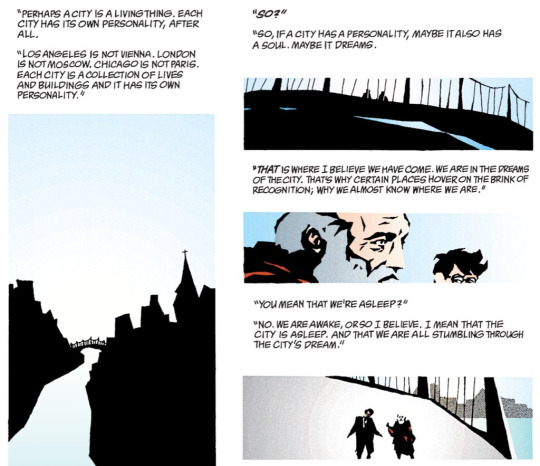
Many stories take place within one city. In Neil Gaiman’s Sandman, a character remarks, “So, if a city has a personality, maybe it also has a soul. Maybe it dreams.” What personality does this city have? What soul does it have? What does it dream of when it slumbers? If your story takes place within a settlement, town, or city, give these questions some thought.
Exactly where is it located within the lands you conjured up in the above Geography questions? Does it have a bay? A river? Does it butt up against mountains? Draw a map of the city.
How big is the city? Is it compact, or sprawling?
How old is the city?
What is the history of the city? How did it come to be? What tumults and triumphs has it seen?
What is the population? Is it currently increasing, decreasing, or remaining the same?
Does the town have any claim to fame? Any tourist attractions? What are they? What’s the story behind them?
If it’s a big enough city, how many and what kind of districts does it have? Residential, Commercial, Industrial, etc. Where are they?
Are there any areas that are deemed unsafe? If so, where are they and why are they unsafe?
Is there public transportation? What kind, bus, tram, train, subway, monorail? Is it good?
How do people get around this city if not by public transportation?
Are the roads narrow or wide? Crisscrossing in a methodical grid or higgledy-piggledy?
What are the buildings like? What materials are they made of? If they’re wooden, are they new wood, old wood? If they’re painted, what colors? If they’re stone, what stone? If they’re brick, is it new red brick or blackened, crumbling brick? If they’re glass and metal, are they sparkling with new hope or dull and jaded?
Are there many skyscrapers? Or are most buildings 1-3 stories tall? What does the skyline look like?
Are there many parks?
How is the city powered? Coal? Hydroelectric? Wind? Nuclear? Has it always been so?
What is the city’s main source of revenue? Agriculture? Tourism? Manufacturing? Mining? Something else? A combination? Dive deeper into this. If it’s agriculture, what do they grow? Tourism–what is famous? etc. This will help to determine what a lot of people do for a living.
What are the demographics? Ethnicity, age distribution, distribution of upper, middle, and lower class, etc.
How many schools are there? Universities? Are any of them good? Do they specialize in anything? Do schools even exist? Perhaps there are clans that teach their children everything they need, for example, or education isn’t viewed as important.
Are there any particular landmarks within the city that standout?
How many and what kind of restaurants are there?
Are there supermarkets, open air markets, or both?
Where do young people go to spend time? What about adults?
Do people there bustle or do they amble?
What are the nights like? Does the city grow quiet, or does it grow rowdy?
What does the city smell like?
If you had to give your town a color, one that represented its personality, what color would it be?

Main Locations: Houses (or buildings, but mainly houses)
There are many stories that have a house or headquarters or hospital or some sort of building as their main setting. These questions will mostly be geared towards helping you figure out a house, but you can apply these to other buildings too probably.
Exactly where is the house located within the city or outside the city? How does your character usually get there? Draw a map.
What year was the house built?
Was this house built by the current family or their ancestors? Who else lived in the house before the current dwellers? What were they like? Did they leave their mark on the house somehow?
What style is the house? Bungalow? Cabin? A shed? A cave? (makes the following questions mostly useless if so lol)
How many stories is it?
What is it made of? Wood? Brick? What color is it?
Does it have a lot of windows?
Are the curtains usually open or drawn? Are thee curtains at all?
What does the front door look like?
Is there a porch?
You enter the front door. Or maybe you don’t. Maybe you use the side door because the front door is for show or something. Anyways. You enter the house. What room do you step foot into?
Draw out the floor plans for each floor. How many rooms are there? Where are they? How big are they? How are they connected? What color are they? What style of decor?
Is there a basement? Is it used or is it just a home for spiders and darkness and unwanted things? How about an attic? Crawlspace?
How many bathrooms?
Are there any rooms that only certain people are allowed to enter? If so, why?
What is the flooring? Carpet? Wood? Tile? Linoleum?
What does the house smell like?

Government/Military/Economy
In other words, “the boring stuff,” if you ask me. But this is a very important aspect of any world.
What sort of government is in place? Democracy, oligarchy, etc? Is it a just or corrupt government?
How are goods exchanged? Bartering? Money? Coins and bills? Credit cards? A specific kind of sea shell? Lol
What are the police like? Strict? Lax? Is there a curfew?
Do taxes exist? If so, do the people feel as though they are heavily or unduly taxed?
Where is the intersection between theology and law? Is it common to have religious leaders in positions of power? Are laws based around religious ideology, or is there an effort to keep them separate?
Is there an organised structure devoted to halting criminal acts? Are they corrupt? Who runs the organisation? How does their reputation change based on demographic? What is the history of the organisation, and how does that history influence how it operates today?
Regarding potentially criminal acts, what is the elgality of prostitution, sex work, ect.?
What about drugs and other illicit substances? Alcohol, illicit drugs, recreational use. Legality, festivity, age limits, etc.
Underbelly. How prevalent is crime, what sort of crime (scaled from pickpocketing to human trafficking) is there? Are there areas that have bad reputations because of it?
Regarding war, are there currently conflicts in the world? Are they international or civil wars? How common is it to have an active war? What is the history of war? What does current warfare look like (Is it dudes in metal suits swinging swords? Have longbows been invented? Gunpowder? Tanks? Missiles?) Is military service mandatory or voluntary? How is the military seen? Is there a sense of patriotism for the military, or does the common man fear it?
Is there stigma around certain genders entering the military? Are come genders regarded as better recruits than others? Is it illegal for some genders to enter the military? Does a person's sexuality affect their ability to serve?
How has religion influenced war? Have there been holy wars in the past? Do any religious institutions hold their own military forces?

Cultural/Historical
I’ve put these together because events in history lead to cultural change. You can apply these questions not only to the world/country, but also the city or even the neighborhood, workplace, or school that your story takes place in.
What is the history of the region? Who was it settled by? Was another group of people displaced? After that, did any new cultures come in? Did they get along?
Were there ever any wars or serious conflicts in the region? What was the cause and what was the outcome of the war if there was one?
In our world, the internet, social media, and film/tv are massive cultural drivers. They determine the latest fashions, jokes, topics, and expressions. What are the big cultural drivers in your world? Books? Plays? Radio? Oral tradition?
Is it a collectivistic or individualistic society?
What languages are spoken by your characters? Is multilingualism common?
What sorts of cultures can be seen? Do any clash? Do any mesh?
What sort of foods are most common?
What superstitions do people hold? Is there a version of “knock on wood” or throwing salt over your shoulder after a funeral? What are the roots of these superstitions?
Are there religions? If so, what are they? Do any conflict with each other? Are zealots or extremists an issue?
Does slavery or indentured servitude exist?
Are there any class or caste systems? If so, what are they, and what does an average day look like for a member of each class/caste?
How does a person's appearance change from country to country? Do certain countries have very distinct fashions? If so, are the fashions influenced by religion, surrounding countries, the cultural majority or international trade partners?
How does a person's clothing relate to their social standing? Is it very easy to assume someone's roll by appearance alone? Are there punishments for dressing above or below your social standing?
Does the society place a great deal of importance on a person's presentation, or is the society more lenient on such things?
Is there an emphasis on conformity to a dress code, or is individuality encouraged? How strictly is clothing regulated by gender binary? Is it commonplace to see a man and a woman walking down the street in the same cut of clothes? Is there a social stigma when a person does not conform to the most common form of dress for their gender?
How are sexual rights viewed? Does the LGBTQ community have the same rights as people outside the community? How are sex acts between people of the same sex viewed? Is it legal? Taboo? Are there cultures that encourage those relationships in some circumstances (like how the romans were down with guys with guys in the military)?
Are there any groups of people that are victims of prejudice? If so, who are they, who holds these views against them, and what views specifically are they?
In regards to gender, do certain societies hold differing beliefs? Is there a commonly accepted number of gender identities or does it change regionally? Is the most common gender spectrum a binary, or do certain racial and cultural differences allow for a wider range to be seen as the baseline?
Are children raised by their biological parents or are children considered to be in the care of the wider community? Is it common/acceptable for extended family to raise children, such as parents needing to study, work, or serve time in the military? Is adoption a common thing in society? Is there a stigma around adoption/being adopted? Do cultural or religious views impact how adoption is seen by the wider community? What is adoption like for a single perspective parent? When adopting, is interracial adoption accepted/common, or is it seen in a negative light? Are some societies more open to adopting children outside of their own race?
How is sex and virginity viewed? Does religion influence it? What is the age of consent? What is appropriate on a first, second, third date? Is sex something that is talked about openly, or something taboo? Are you supposed to wait until marriage? Do couples stay monogamous while dating? Do some regions place higher importance on virginity than others? Do some place higher importance on one gender’s virginity than others?
How is marriage viewed? Are arranged marriages a big thing, or are people free to choose? Is monogamy common? How is a marriage symbolized? A wedding ring, or something different?
How is divorce viewed? What is the divorce rate? Can people remarry?
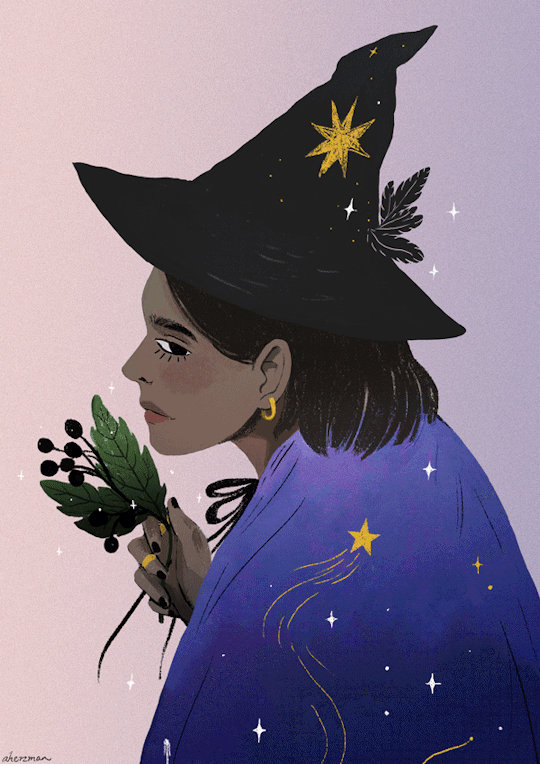
Magic and the Supernatural
If magic or spooky stuff doesn’t exist in your story, disregard this section.
Does magic exist? If so, who can use it? What are the limitations to their magic? What things are they capable of using their magic to do? What things are they incapable of doing?
Are there laws against what kind of magic can/cannot be used? What sort of laws? Who enforces them? What are the punishments for breaking said laws if they exist?
How does the existence of magic affect religion? Are there religious institutions that infuse magic into their worship? Are there religious sects that see magic as immoral and in direct opposition to their faith? Have there been conflicts in recent or ancient history between religion and the supernatural? Do some sects employ people to hunt and/or enforce law over the supernatural?
Assuming that magic does exist, is it taught? Are there different schools of magic? Is there a system of ranking for magic users based on their skill level?
Do non-magic users look towards magic users with respect or fear?
What role does magic play in this world? Has technology not advanced because magic solves many problems? Or has technology advanced and the use of some magics has become unnecessary?
Are there any mythological creatures/monsters, such as vampires, demons, skinwalkers, dragons, or other creatures of your own creation? Are they common? Do people believe in their existence? Do people worship them? Where can they be found? Do they interact with humans? Do humans fear them or try to put up with them as they do nature?
Do the dead continue to exist in some form, such as ghosts or zombies or the like? Can the dead be summoned or brought back to life?
Are there human/supernatural hybrids? Perhaps a half-demon half-human, for example? How are these people viewed by their peoples, and by society as a whole?
How has the supernatural influenced war? Do armies tend to have a mix of regular and supernatural soldiers/weapons? Have there been wars between the supernatural/magical and those without? How does magic influence a person standing in a mixed army? Is it more likely for a magical being to be promoted than a non-magical being? Conversely, are supernatural being forced into service and seen as pawns?
The End!
Please feel free to reblog and share, and add on any questions you think should be added!
#worldbuilding#world building#creative writing#writing fiction#writing tips#brainstorming#creative writing methodology#writing prompt#writing exercise#writing prompts for friends resources#long post#writing inspiration#writing prompts for friends
3K notes
·
View notes
Text
How to start spices business in India
We are crazy about Indian food, all our festivals, events and even our daily life is heavily influenced by spices. We divide by country, but the one thing that binds us is the "spices". India is known as the "Motherland of Spices", an Indian spice that is demanded worldwide for its texture, aroma, taste and medicinal properties. India is the world's largest consumer, producer and exporter of spices. We produce about 75 of the 109 varieties listed by the International Organization for Standardization and make up about half of the world's spice trade.
History and statistics of spices
Spices have always been an essential part of Indian foreign trade with foreign countries unlike Arabia, Sumer, Mesopotamia, China, Egypt as well as textiles and perfumes.
A vast history of spices is written in their place in every holy book. The Ramayana was also featured in the writings of the Roman Empire in the 1st century AD. Camel caravans regularly departed from Calicut, Goa and the East. They also transport these spices to destinations such as Carthage, Alexandria and Rome. Source
Indian spices are widely available today, but there was a time when people had to risk their existence to get access to Indian spices. From an Indian point of view, century after century it attracted both traders and invaders.
India's spice exports totaled over Rs 231 billion in FY19. The top 10 importers of spices in India between April and October 2018 were the United States, Vietnam, China, Hong Kong, Thailand, United Kingdom, United Arab Emirates, Malaysia, Bangladesh and Sri Lanka. The top 10 spices and spice products exported in terms of value include peppermint products, chili, spice oils and oleoresin, turmeric, cumin, black pepper, powder/paste, curry, cardamom seeds, other spices (tamarind, asafoetida and bay leaves). ) and garlic. The total export of various spices in 2017-18 was $3.11 billion.
The consumption of spices in an Indian household is very high; So the market is growing at the rate of Rs 40,000 crore per year. In spice business if you see so much potential that it guarantees good returns with less investment, then anyone can start a business, and home spice business is also profitable.
Indian spice exports showed a significant increase in value and volume. In the period 2018-19, a total of 11,00250 tonnes of spices and spice products were exported from the country, valued at Rs 19,505.81 billion ($2,805.50 million), up from Rs 17,980 worth 10,28,060 tonnes in 2017-18 . 7% increase in volume and 6% increase in rupee and dollar value.
How to start spice shop in India
Check out some of our successful spice packaging case studies
1. Children involved in starting a spice shop?
The Indian spice market is expected to reach around $18 billion by 2020, and the growth of this sector is expected to be driven by branded spices and spice blends. India is the largest spice producer country, producing 50 different spices that people crave for ready meals, and spice powders make their dishes more accessible. Therefore, the use of spice powders is constantly increasing and futuristic.
The powdered spice is convenient to use for preparing various delicious dishes and saves time and physical exertion. All the commercial food industries like hotels, restaurants, caterers and many others use spice powder on daily basis.
Spice powder makes it an easy and profitable business, and anyone can start this business with a small investment.
Original Investment: INR 4 Lakh to INR 5 Lakh
Required area: 500 sq ft
Win percentage: 50% to 70%
Profit: Average sales 100kg/day, 50,000 to 150,000 per month
Other additional expenses include equipment maintenance, employee salaries and marketing expenses.
2. License Terms
Since the spice powder comes under the food category, it must comply with several state government regulations, such as the following:
Business registration should be based on company size, if your Pvt. Ltd., Your Partnership
1 note
·
View note
Text

Find best Holi Events in the Bay Area on ePadosi
As the festival of colors, Holi, approaches, the Bay Area is gearing up for a vibrant and lively celebration. To help locals and visitors alike, ePadosi has curated a list of the top Holi events in Bay Area. From traditional temple celebrations to modern music festivals, there is something for everyone to enjoy. These events not only showcase the rich Indian culture and traditions but also provide a sense of community and togetherness. With a variety of activities, delicious food, and colorful festivities, these events promise an unforgettable Holi experience. So mark your calendars and head over to ePadosi to unveil the top Holi events in the Bay Area and make this festival of colors truly special.
#holi events in bay area#bay area holi events#holi celebrations in bay area#holi festival bay area#holi parties in bay area#bay area holi festival#holi events near me#holi colors festival bay area#holi cultural events in bay area#holi dance party bay area#colorful holi events in bay area#family-friendly holi events in bay area#free holi events in bay area#traditional holi events bay area#holi events in bay area this weekend
1 note
·
View note
Text
Sun Temple Konark- History, Legend, Significance, How To Reach

Sun Temple Konark
The Sun Temple Konark is one of the few temples dedicated to the sun god Surya. It is also a huge tourist attraction due to its architectural wonder and its significance. The most interesting thing about Hindu mythology is that everything present on this earth is believed to be a creation of God, and has an ‘ansh’ (part) of the god within it. This is why Hindus worship every element which affects our lives, like rivers, mountains, plants, animals, and planets. All planets are treated as gods and are worshipped. The Sun being the master of the solar system occupies a special place in Hindu mythology and is worshipped a lot.
Location: Konark, (Odisha) Built by: Narasimhadeva –I Main deity” Suryadev (The sun god) Also known as: The Black Pagoda
The Sun god:
Like all other planets, the Sun is also revered as a god and called ‘Surya dev’ (the sun god). There are several sun temples across the world and in India. Two prominent sun temples in India are Konark Sun Temple, at Konark (Odisha), and Modhera Sun Temple, Mehsana (Gujarat). These temples were built originally for prayers and sacrifices dedicated to Surya dev, the Sun god. Such temples were built across several countries like India, China, Egypt, Peru, and Japan. Most of these temples are in a ruined state now and some have been nominated by UNESCO as World Heritage Sites. One such temple, located in India, and nominated by UNESCO is the Konark Sun Temple, at Konark in the Indian state of Odisha.

Location of the sun temple konark:
The Sun Temple is located in a village called Konark, along the coastline of the Bay of Bengal. The village got its names due to this temple only. Konark is located in Odisha, about 35 km northeast of Puri, another holy city of Odisha, and 65 km southeast of Bhubaneswar, the capital of Odisha. This temple was a major landmark for the European sailors, who gave it a name, the “Black Pagoda” as it looked like a great tiered tower that appeared black.
History of sun temple konarak:
The Sun temple at Konark was built in the 13th century by the great king of the Eastern Ganga dynasty, Narasimhadeva –I. The temple was built around the year 1250 CE. This temple built in stone was designed in the form of a huge ornamented chariot dedicated to Suryadev, the Sun god. Why did the king build this temple is not known. Historians believe that it could be due to his gratitude for a wish-fulfillment or to celebrate a victory or even out of his devotion to the sun lord. The royal touch is seen in the form of sculptures depicting royal activities, like hunting, processions, and marching of soldiers.
Significance of the temple:
As per Hindu mythology, Sun is depicted as a god, who starts his journey in the morning from the east and swiftly moves across the sky to the west, where it sets and completes the journey for that day, only to start a new journey, next morning. The Sun Temple at Konark depicts this journey of the Sun-god across the sky in a chariot, marshalled by the charioteer Aruna (meaning dawn). The sun god is depicted as an attractive person standing in the chariot, which is being pulled by 7 horses, which are named after the seven meters of Sanskrit prosody – Gayatri, Brihati, Ushnih, Jagati, Trishtubha, Anushtubha, and Pankti. The sun god is depicted standing with a lotus in both his hands. He is shown flanked by two females on either side of his. These two females depict the two dawn goddesses, Usha and Pratyusha (both names mean the first light of the sun). These dawn goddesses are shown to be shooting arrows, which signify their shooting arrows of bright light to dispel the darkness. In a way, they also signify that each new day is a new beginning. It brings along new hopes and new energy. The chariot is shown to have 12 pairs of wheels, which correspond to the 12 months of the Hindu calendar, with each month paired into two fortnightly cycles (called the krishna paksha and the shukla paksha). At Konark temple, this iconography of the sun is depicted on a grand scale. The temple has 24 giant and elaborately carved stone wheels which are nearly 12 feet (3.7 m) in diameter and are shown to be pulled by seven horses When seen at the time of sunrise, the chariot-shaped temple appears to emerge from the depths of the blue sea carrying the sun.

The Architecture at Konark:
The word ‘Konark’ is a combination of 2 Sanskrit words (kon + ark). The word ‘kon’ means ‘angle’, and the word ‘ark’ refers to ‘Surya’ the sun god. Some believe that the work ‘kon’ is derived from its strategic position. There are 3 major temples in Odisha namely Jagannath Temple at Puri, Lingaraj Temple at Bhubaneswar, and the Sun temple at Konark. If you were to join these three temples over a map, they would form a bilateral triangle, with the Konark temple being one of the angular points. So, the name signifies that the main deity is the ‘sun’ god and the temple is built in an angular format. These three cities are said to be thee corners that form the Golden Triangle of Odisha. The Sun temple follows the Kalinga style of architecture, which is derived from the nagara style of temple architecture. This ‘was among the 3 styles of Hindu temple architecture, which were prevalent in India at that time. These styles were divided in terms of their popularity across India. While the nagara style was popular in North India, it was the ‘dravida’ style that was popular in South India. In Central and East India, people preferred the vesara style. The difference between these 3 styles is how they do the ground plan and visually represent the elevation. The Kalinga style showcases the nagara style in its complete purity. The Sun temple at Konark is a beautiful example of that. This style of temple architecture includes a temple in a square ground plan, with a sanctuary and assembly hall (mandapa). To give the temple an elevation, they build a huge ‘shikhar’ (curvilinear tower), which is inclined inwards and is capped. Though Odisha lies in the eastern region, but still the temple is built in the nagara style. This could be due to the fact that the kingdom included many areas of north India as well. Hence, this was the style they started working with. Once adopted, it became a tradition, with no change.
From glory to gloom:
The sun temple, which has once seen the days of glory, is now in ruins. Though the exact cause of its destruction is not known. Some people attribute it to some natural calamity, while people blame Muslim invaders for destroying the temple. The main temple at Konark, called the deul, is no more there. In its hay days, the deul was surrounded by several subsidiary shrines, most of which depicted the many aspects of Surya. The ‘deul’ (sanctum, which houses the deity) was built at a height. The original temple consisted of the main sanctuary, called rekha deul, or bada deul (meaning big sanctum). In front of that, there was the bhadra deul (meaning small sanctum), also called jagamohana (where people could assemble and worship). The attached platform called the pida deul consisted of a square mandapa with a roof like a pyramid. All of these structures followed a square pattern with a variegated exterior. The central projection called the ‘raha’ was more pronounced than the side projections, called kanika-paga. This style allowed for a beautiful interplay of sunlight and shade and added to the visual appeal of the structure throughout the day. The sanctum of the main temple is now damaged and stands without a roof and several original parts. On its east side is the Nata mandira (meaning dance temple). It is also built on a height and has intricate carvings. It stands on a high, intricately carved platform. According to texts, earlier there used to be an Aruna stambha (meaning Sun’s pillar) between the main temple and the Nata mandira, but during the troubled period, it was moved to the nearby Jagannath temple at Puri. The upana (moulding) at the bottom of these platforms contains beautiful carvings depicting elements from life. These carvings depict musicians playing instruments, people carrying goods on their heads or on a bullock cart, travellers preparing a meal along the highway, hunting scenes, and even festivities. Other walls contain images that depict the daily life of elite people. It shows young girls wringing their hair after taking a bath or applying makeup while looking into the mirror, or playing instruments such as the ‘veena’. It also has images of common people chasing away a monkey who is trying to snatch items, a family bidding goodbye to their grandmother who seems to be going for a pilgrimage, a mother blessing her son, a teacher teaching with students, yogi during a standing asana, and a warrior being greeted among others. The Konark temple is also known for its erotic sculptures showing couples in various stages of courtship and intimacy. These erotic sculptures are found on the temple’s ‘shikhara’ and illustrate the various poses described in the ‘Kamasutra’.

Best time to visit Konark:
Since Konark is very close to the coast, the summers are very hot and humid. The months of April to June, are very hot. The best time to visit the Konark temple is between September to March, as the weather is pleasant during this time. Also, if you are a photo enthusiast, and want to capture the rising sun or the setting sun, then it’s better to go early morning or early evening, and you can capture the temple in full glory, with the sun god in the background.
How to reach Konark?
By Air: The nearest airport to Konark is Biju Patnaik International Airport at Bhubaneswar, which is at a distance of 65 km. The airport is connected to all major cities of India. From here you can easily take a taxi and drive to Konark in an hour.
By Train: The nearest railway station to Konark is Puri, which is 30 km away from Konark. You may take a train from Bhubaneswar to Puri and then take a taxi or bus from there.
By Road: Both government and private buses are available from Bhubaneswar and Puri. The journey to Konark is pleasant with good roads and a nice scenic view.
Final words on sun temple konark
The Konark Sun Temple is undoubtedly one of the greatest architectural marvels of the Indian subcontinent, as a symbol of rich architecture. Though it has lost much of its glory, it still attracts a lot of tourists. UNESCO has declared the Sun Temple at Konark as a World Heritage Site, which highlights its importance. This importance can be gauged from the fact that the state emblem of Odisha containing a warrior and horse statue has been taken from the Konark temple. The design of the new ten-rupee currency note depicts a motif of Konark Sun Temple on the backside.
1 note
·
View note
Text
Herb Correspondents Master Lists Part 1. (A-D)
Hello this is the start to a series i will be doing. i really hope you enjoy!
Acacia (Acacia Penninelvis)

Energy : Masculine Planet : Sun Element : Air Symbol : The Afterlife
Gods : Osiris, Astarte, Ra and Diana
Uses
Common Ingredient in protection spells.
Can help enhance psychic powers.
To make a great mediation incense combine with sandalwood.
Burn the leaves on charcoal to increase personal power.
African Violet (Saintpaulia Ionantha)
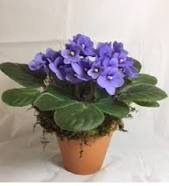
DO NOT CONSUME!
Energy : Feminine Planet : Venus Element : Water
Uses
Can be used in protection rituals.
Good for enhancing spirituality.
Agrimony (Agrimonia Eupatoria)
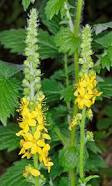
DO NOT CONSUME!
Energy : Masculine Planet : Jupiter Element : Air
Star Sign : Cancer
Uses
Use in spells about exploring true feelings.
Protection spells.
Useful in building a psychic shield.
Reducing negative influence.
Banishing negative influence.
Reverse and rebound hexes.
Enhances healing spells.
Helps sleeping.
Spells/Rituals
Sleep Spell = “If it be leyd under mann’s heed,
He shal sleepyn as he were deed;
He shal never drede ne wakyn
Till fro under his heed it be takyn.”
Alder (Alnus Glutinosa)
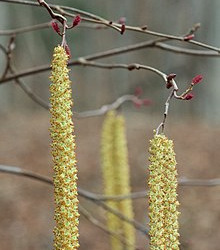
DO NOT CONSUME!
Planet : Moon, Mars Element : Water, Fire
Gods : Odin, Apollo and Aphrodite
Animals : Ravens, Hawks, Seagulls and Foxes
Common Names : Scottish Mahogany, King Of The Forest, Tree Of The Fae
Stones : Lapis Lazuli and Amethyst Colour : Purple
Uses
Use in rituals to allow access to faerie realms.
Facts
Do not cut down, or face bad fortune from fae.
Wood does not rot but hardens.
Almond (Prunus Dulcis)

Energy : Masculine Planet : Mercury Element : Air
Uses
Use in fertility, money, luck charms.
Use in hand fasting rituals and love spells.
Use in rituals for overcoming addiction.
Great as a carrier oil.
Aloe (A.Vera Barbadensis)
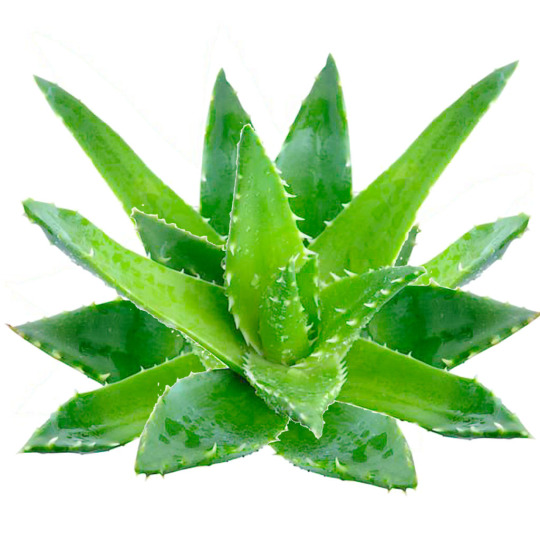
DO NOT DRINK ALOE JUICE IF YOU ARE PREGNANT! KEEP AWAY FROM PETS! CAN CAUSE ALLERGIC REACTIONS!
Energy : Feminine Planet : Moon Element : Water
Gods : Venus and Aphrodite Star Sign : Cancer
Uses
Use to create an amulet against accidents and misfortunes.
Use in spells for love and beauty.
Use in lunar spells.
Alyssum (Lobularia Maritima)
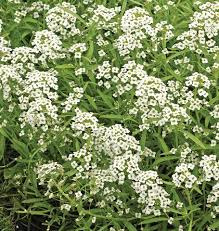
CAN CAUSE DERMATITIS IN SENSITIVE PEOPLE!
Planet : Mercury Element : Air
Uses
Use in protection against hexes and glamours.
Use to deflect spells aimed to mislead you.
The smell is said to evoke peaceful energy, spiritual and emotional balance.
Wearing a sprig helps to prevent and calms angry encounters.
Makes a good addition to moon and fae gardens.
Amaranth (Amaranthus Spp)
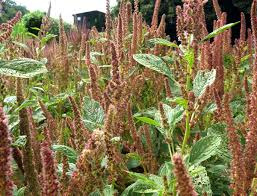
DO NOT EAT RAW IN LARGE AMOUNTS!
Gods : Huitzilopochtli, Artemis, Demeter
Uses
Spells to mend a broke heart.
Dried amaranth flowers can be used to call forth the dead.
Used in Pagan ceremonies.
Used to decorate images of Gods/Goddesses.
Rituals
= A crown of Amaranth flowers worn on the head speeds healing.
Angelica (Angelica Archangelic)
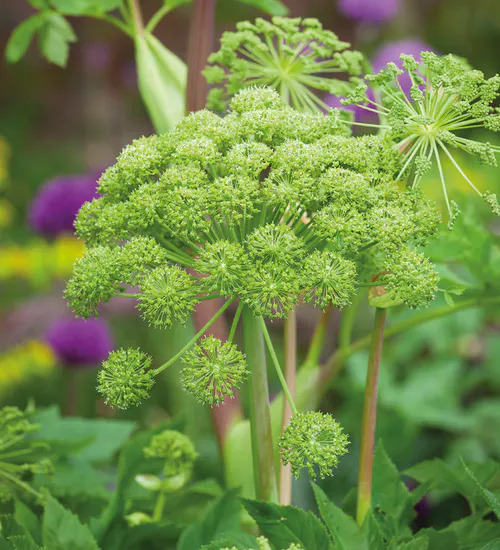
DO NOT USE IF PREGNANT OR IF DIABETIC!
Planet : Sun Element : Fire Gods : Venus
Angels : Micheal and Gabriel
Uses
Used for general protection.
Use for hex breaking.
Use as protection against evil spirits.
Use for blessings.
As an incense its excellent for exorcisms, healing and protection.
Spells/Rituals
Protection = Grow angelica on your property to protect your garden and home.
Amulets = Carry or add to amulets to increase longevity or to ward off illness and evil spirits.
Potions = Add to potions that are designed to remove curses/spells or to banish evil in an area.
Anise (Pimpinellaa Anisum)

CAN BE TOXIC IN LARGE QUANTITIES! DO NOT USE ESSENTIAL OIL UNDILUTED! USE WITH CAUTION IF USING IRON SUPPLEMENTS!
Energy : Masculine Planet : Mercury and Jupiter Element : Air
Gods : Apollo Zodiac Sign : Gemini
Uses
Protection from evil spirits and intentions.
The scent is said to stir up lust.
Aids in divination
Can be used as an offering to spirits.
Spells/Rituals
Restoring Youth = Hang an anise seed head from your bedpost to restore lost youth.
Sleep = Use in pillows to keep away nightmares and ensure a good night’s sleep.
Holy Water = Add to holy water for blessings and exorcisms.
Warding = Can be used in Holy water for blessing and exorcisms.
Apple (Malus Domestica)

Energy : Feminine Zodiac Sign : Taurus
Goddesses : Aphrodite, Iduna, Freya, Pomona and Eris
Symbols : Love, Fidelity, Fertility, Marriage, Beauty, Vanity, Wisdom, The Soul, The Afterlife and Immortality
Uses
Apple blossoms can be used in love and healing incense.
Can be used as an offering to the dead at Samhain.
Apple tree wood can be used to make wands.
Spells/Rituals
Altars = If you slice an apple width wise, you can see a five-pointed star. They can be used to decorate altars during harvest rituals.
Fidelity = Give an apple to you lover as a gift. You eat one half and your lover eats the other. This will ensure fidelity.
Soulmates = If you peel an apple in one piece and throw the peel over your shoulder. It will fall in the shape of your soulmate’s name.
Arnica (Arnica Montana)

DO NOT CONSUME!
Energy : Masculine Planet : Sun Element : Fire
Gods/Goddesses : Freya, Ra and Apollo
Associations : Midsummer, The Harvest and Honour Spirits
Uses
Use in protective rituals.
Use in rituals for crop fertility.
Spells/Rituals
Drive away a thunderstorm = Burn arnica to drive away a thunderstorm, saying : “Set arnica alight, set arnica alight, thunderstorm take flight”
Protection : Plant arnica to keep an area free from spirits entering or leaving the area.
Ash (Fraxinus Spp)
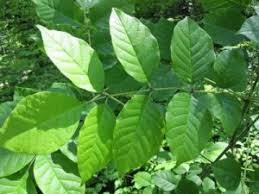
Energy : Feminine Element : Fire, Air and Water
Uses
The wood can be used for wands, staves and besom handles.
It’s a good attracter and conductor of energy.
Spells/Rituals
Sleep = Sleep with ash leaves under your pillow to receive prophetic dreams.
Good Luck = Carry a leaf of ash in your pocket for good luck (ensure that there are an even number of leaves.)
Asparagus (Asparagus Officinalis)

Planets : Mars and Jupiter Element : Fire Gods : Zeus
Symbol : Lust and Fertility
Uses
Lust spells
Fertility spells
Astragalus (Astragalus Membranaceus)
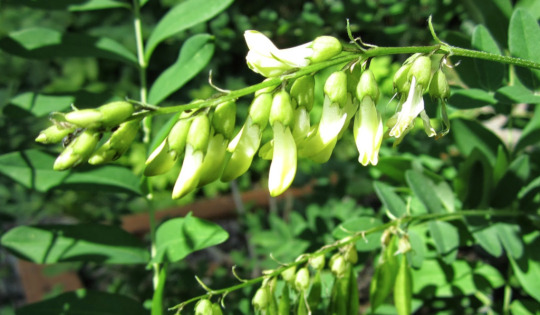
DO NOT CONSUME DURING MENSTRUATION OR IF YOU HAVE AN ACUTE INFECTION!
Planet : Jupiter Element : Air
Uses
Use to increase energy for a variety of applications.
Basil (Ocimum Basilicum)

Planets : Mars Element : Fire
Gods/Goddesses : Vishnu, Tulasi and Erzulie
Uses
To bring happiness, love, peace and money to the household.
Use in spells for attracting love.
Aids astral protection.
Brings luck in physical journeys.
Use in peacemaking spells.
Rituals
Protection = To protect yourself when leaving home rub some basil on your forehead.
Bayberry (Myrica Cerifera, M.Carolinensis)
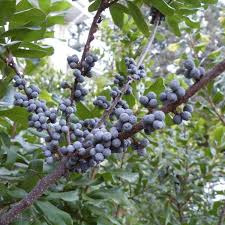
AVOID CONSUMPTION!
Energy : Feminine Planet : Jupiter Element : Earth
Uses
Use in luck and prosperity spells.
Use in money drawing spells.
Spells/Rituals
Luck = Add bayberries to a luck or fortune drawing charm bag.
Bay Laurel (Laurus Nobilis)

Energy : Masculine Planet :Sun Element : Fire
Gods/Goddesses : Apollo, Zeus, Aesclepius, Ceres, Hermes and Cerridwen
Zodiac Sign : Leo
Uses
Protection spells.
Banishing and exorcism rites.
Can purify and drive out illness.
Spells/Rituals
Wishes = Write a wish on a dried bay leaf and burn it for the wish to come true.
Sick = Give a laurel wreath to the ill and it can help aid recovery.
Betony (Stachy Officinalis, Betonica Officinalis)
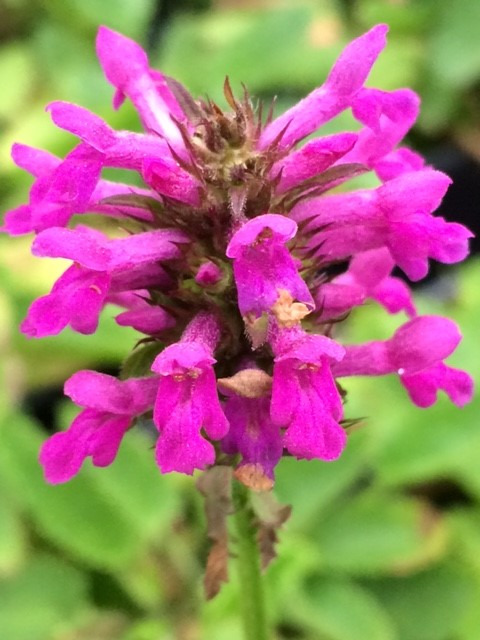
Energy : Masculine Planet : Jupiter Element : Fire
Spells/Rituals
Protection = Can be added to protective mixtures, grown around the home or carried by an individual to protect from negativity, misfortune and hexes.
Protection = Scatter near doors to prevent unwanted energies and people from entering.
Sleep = Stuff into a pillow or place underneath to prevent nightmares and night terrors.
Bindweed (Convolvulaceae)
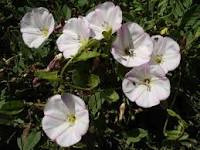
DO NOT CONSUME!
Planet : Saturn Element : Water
Uses
The vines can be used for binding spells.
Use to create bridges and connections between realms.
Blackberry (Rubus Fructicosus, Rubus Canadensis)
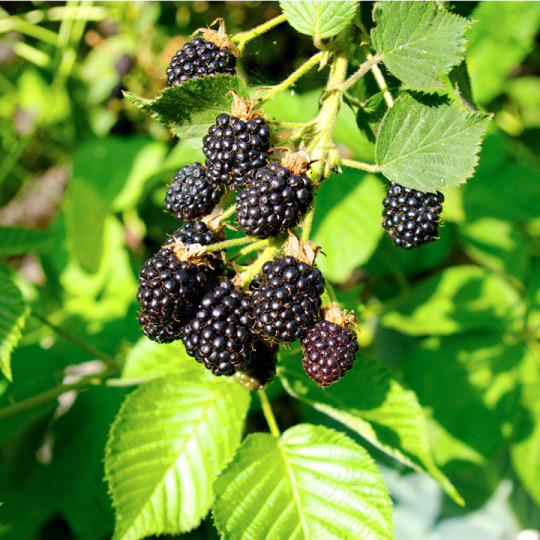
Thorny Branches Blackberry Leaves
Zodiac Sign : Aries Zodiac Sign : Scorpio
Element : Fire Element : Water
Uses Uses
Protective Wreaths. Aphrodisiac Tea
Spells/Rituals (Blackberry Leaves)
Health = Dip nine leaves in a natural water source and lay them on a burn or a red inflamed area. Say to each leaf as you lay them on the wound :
“Three ladies came from the East, one with fire and two with frost, out with fire, in with frost”
Berries
Energy : Feminine Element : Earth
Uses
In magickal cooking for prosperity.
Used to celebrate first harvest festivals such as Lughnassadh.
Black Cohosh ( Cimicifuga Racemosa)
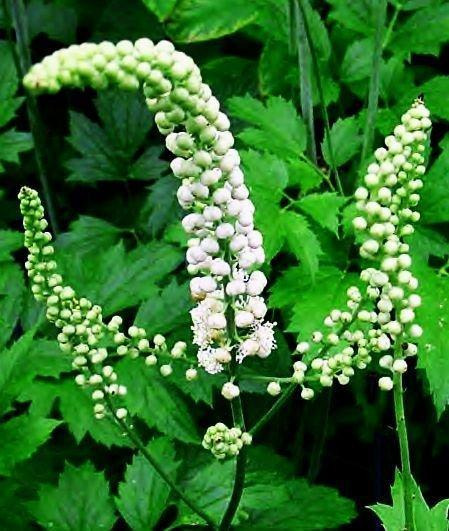
DO NOT CONSUME!
Planet : Pluto Element : Fire Zodiac Sign : Scorpio
Uses
Use in sachets for love, courage and potency.
Add to holy water and sprinkle around the room to drive off negative influences.
Bluebell (Hyacinthoides)
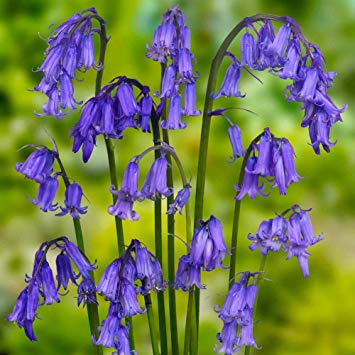
DO NOT CONSUME!
Planet : Saturn and Moon Element : Air
Symbol : Truth, Humility, Gratitude, Everlasting Love and The Fae
Uses
Love spells.
Wear in a wreath to be compelled to speak the truth.
Rituals
Love = Turn a bluebell flower inside out to ensure you will win the heart of the one you desire.
Sleep = Place under a pillow to prevent nightmares.
Burdock (Arctium Lappa)
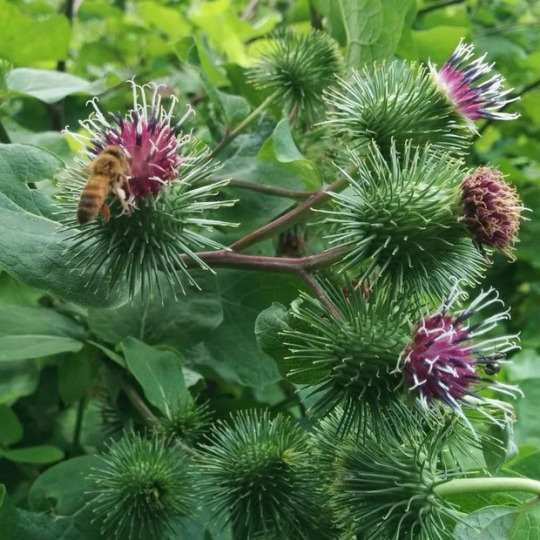
Energy : Feminine Element : Water Planet : Venus
Uses
Use in rituals, amulets and spells to ward off negativity and for general protection.
Use for general healing.
Spells/Rituals
Protection = The root can be carved into a figure, dried and carried or worn as a protective amulet.
Calendula (Calendula Officinalis)

Planet : Sun Symbol : Love
Other Names : Marigold
Uses
Love potions.
Good addition to dream pillows.
Spells/Rituals
Warding = Hang wreaths of marigold over a door to keep evil and negativity from entering.
Cardamom (Elettaria Cardamomum)
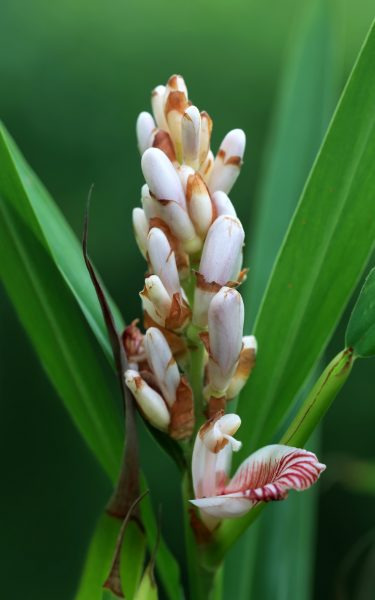
DO NOT CONSUME IF PREGNANT OF IF YOU HAVE GALLSTONES!
Energy : Feminine Planet : Venus Element : Water
Uses
Use in lust sachets
Use to relax the body and to clarify the mind
Spells/Rituals
Love = To encourage a love interest, chew some cardamom seeds before talking to them.
Chamomile (Chamaemilum Noblie)

Planet : Sun Element : Water Zodiac Sign : Leo
Chakra : Throat Gods/Goddesses : Ra, Cernunness and Lugh
Uses
Use in money, peace, love, tranquillity an purification spells.
Aids meditation.
Spells/Rituals
Protection = Make an infusion to wash thresholds to help keep unwanted energies or entities from passing through.
Ritual Bath = Use in a ritual bath to release a loved one or release feelings of pain, loss or anger.
Chestnut
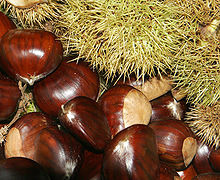
Energy : Masculine Planet : Jupiter Element : Fire
God : Zeus Symbol : Fertility, Desire and Abundance
Uses
Use as talismans can be used for justice, success and to gain sympathy at your audience and to encourage knowledge.
Staves made from this wood encourage longevity, increase energy, enhance intuition and helps with growing energy.
Chrysanthemum
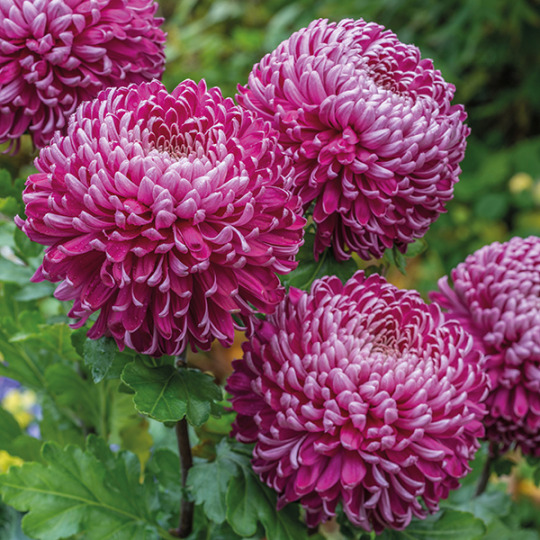
Energy : Masculine Planet : Sun Element : Fire
Spells/Rituals
Altar = Used to decorate your altar for Samhain and for ancestral altars.
Blessing = Burn the dried flowers during house blessings.
Cinnamon (Cinnamomum Zeylanicum)
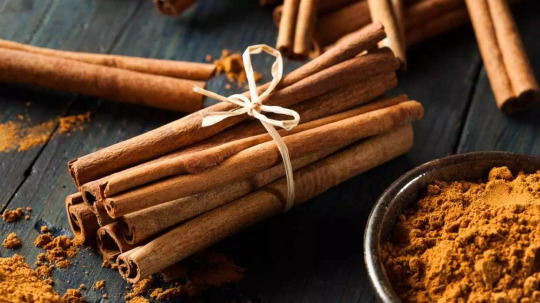
Planet : Sun Element : Fire
Uses
Aids in healing spells
Love spells
Use for charms for love, happiness and money
Cloves (Syzygium Aromaticum)
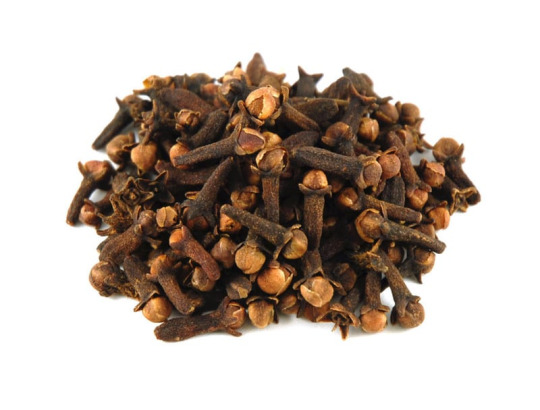
Energy : Masculine Planet : Jupiter Element : Fire
Uses
Use to attract good luck and prosperity.
Use as an aphrodisiac.
Spells/Rituals
Prevention = Burn to prevent people from spreading rumors about you.
Friendship = To keep friendships strong make each friend a cloth bag with seven cloves inside, wear always.
Coltsfoot (Tussilago Farfara)
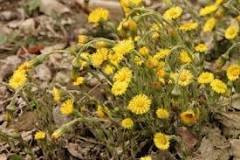
DO NOT CONSUME!
Planet : Venus Element : Water
Uses
Use for holidays such as Imbolc, Ostara and Beltane.
Use in love, tranquillity and money spells.
Can be burned during divination rites.
Comfrey (Symphytum)

DO NOT CONSUME!
Planet : Saturn Element : Water Gods/Goddesses : Hecate
Uses
Protective magick
Substitution for borage
Spells/Rituals
Protection = Add a comfrey leaf to your luggage to make sure it isn’t lost or stolen.
Protection = Wrap your money in a comfrey leaf for a couple days to protect it.
Cleanse = Add to a ritual bath
Corn (Zea Mays)
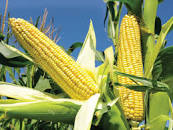
Energy : Feminine Planet : Sun Element : Fire
Uses
Use as an offering in harvest rituals.
Use in spells for luck, prosperity and abundance.
Crocus ( Crocus)
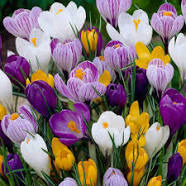
DO NOT CONSUME!
Planets : Mercury and Venus Element : Water
God/Goddesses : Venus, Eos, Persephone and Aphrodite
Uses
Decoration for spring festivals.
Spells related to new beginnings.
Used in spells for love, friendship, settling disputes, peace and divination.
Cyclamen
DO NOT CONSUME! DO NOT CONSUME OR TOUCH IF PREGNANT!
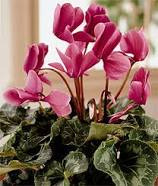
Energy : Feminine Planet : Mars Element : Water
God/Goddesses : Hecate
Uses
Use in spells to increase joy and happiness and also to send away unwanted people.
Love spells.
Spells/Rituals
Protection = The oil can be worn to protect oneself from a broken heart.
Sleep = Can help keep nightmares and hexes away.
Daisy (Bellis Perennis)

CAN CAUSE DERMATITIS IN SOME PEOPLE!
Energy : Feminine Planet : Venus and The Sun Element : Water
Uses
Offering to Goddesses.
Good wreaths at Beltane.
Spells/Rituals
Love = Daisies are most commonly known for their diviniatory :
“He loves me, he loves me not” spell practised by young girls.
Dandelion (Taraxacum Officinale)
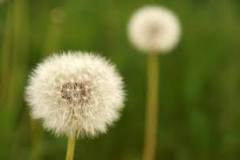
Energy : Masculine Planet : Jupiter Element : Air
Zodiac Signs : Sagittarius and Pisces
Gods/Goddesses : Hecate, Brigid, Belenas and other solar deities.
Uses
Aids in calling spirits.
Increases psychic ability.
Spells/Rituals
Spirits = Pouring boiling water over a bowlful of roots will aid in calling spirits.
Wish = Make a wish and blow the seeds off a dandelion head.
Devil’s Claw (Harpagophytum)
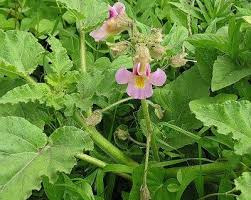
DO NOT USE; IT IS AN ENDANGERED SPECIES!
Planet : Mars Element : Fire
Uses
Useful for banishing, exorcisms and purification
I hope you guys found this helpful. Just this post took me a couple hours. I do intend to do the rest in 4 or 5 letter bundles (Though i may not post one instalment every day). If anyone has any suggestions, ideas or needs help fell free to comment or message me. Blessed be!
#witch#witchcraft#wiccamagic#wicca for beginners#pagan wicca#wiccan#wiccalife#pagan witch#ecletic pagan#pagancommunity#pagan#witchlife#witchblr#kitchen witch
499 notes
·
View notes
Text
THE IMPORTANCE OF INDIAN FESTIVALS
It's the whole question of the world --the moons, the values and myths," says Malvika Singh, editor of India magazine, a cultural publication in New Delhi." They are the life of the people. It's not so much a festival as living and prayer." In India, the abundance of festivals originates from the nation's religious diversity. For many, festivals are personal family affairs. However, there probably are several countries where rituals are performed with such public zest and uninhibited gaiety. These include the smaller melas or classic state fairs, and they frequently are as colorful as the bigger spectacles. Significant temples have their own calendar of events, honoring favorite deities in the town. The feast is devoted to the thousand-headed hydra, Ananta, whose coils form the couch of Vishnu and represent eternity. On this day, live cobras or their graphics are worshipped, and snake charmers do a lively business. Bengal and Kerala are facilities for snake worship. Some festivals celebrate a specific god's birthday such as Ram navami for arrival of lord Ram, Ganesh chaturthi or Ganesh utsav for arrival of lord Ganesha, Christmas celebrated for arrival of lord Jesus Christ. Sivaratri (March 8) is a feast in honour of Shiva and parties center from the sacred city of Varanasi at north-central India. The loyal hold processions into the temples and all-night vigils, which are supposed to guarantee material prosperity and heaven after death. The folks chant mantras to remain alert and alert the lingam, a stone phallus that symbolizes Shiva. The bamboo and paper figures tower against the fading evening light. Celebrated in late October or early November, households spend the weeks before Diwali sprucing up their homes, buying gifts and stocking up on festive foods and sweets. It's reminiscent of Christmas in Western countries. So many reasons and lots of seasons for many festivals. Not everybody follows every festival. Fundamentally we Indians long ago obtained it that festival is a motive for entire family to meet and catch up, be together, relax and feast together and live happily. Festivals also give us a much needed break from our everyday occasionally monotonous life. Here's a sampling of important festivals, their date this season and the best places to watch them. (A comprehensive calendar of Indian festivals can be obtained through government tourist offices in big Indian cities.) Holi (March 26) is an extravagant Icelandic feast marking the coming of spring. It's a time for playing tricks on others and making them seem ridiculous, even people who are your social superiors. Bonfires are lighted and the roads are packed with people throwing colored powder or water. The god Krishna, an incarnation of Vishnu, is often honored at this moment, so the very best to go through the festival is in Mathura, his birthplace, south of Delhi. Kumbha Mela (the second week in April) is held just once every 12 years, and will occur this year in Hardwar, a north India mountain town.
This festival is India best periodic honest. Millions will flock to the town to bathe in the Ganges, which plunges through a mountain gorge now and starts its slow motion to the Bay of Bengal in the east. One myth states that a god in the shape of a bird uttered a coveted kumbha or jar of ambrosia and stopped at Hardwar on the way to heaven. Another suggests the sacred nectar spilled in this place. (really Krishna), probably is the most famous Hindu shrine. An enormous decorated chariot, 45 ft high with wheels seven feet in diameter, bearing a picture of the god, is pulled through the streets by pilgrims.
It's most spectacular in Delhi, which stages a vibrant military extravaganza. Pushkar Cattle Fair (Nov. 16) is among India's most vibrant events. Over 200,000 people flock into the city, bringing with them thousands of camels, cows and horses. It's an important tourist event with a massive tent city set up to accommodate 3,000 visitors. Advance reservations are advised. Ugadi / gudi padwa is brand new year for Kannada Telugu Tulu and Marathi speaking people that is a festival of new year after the language that these individuals are speaking specifically Kannada Telugu Tulu Marathi. On the night of Diwali, which is known as the Festival of Lights, buildings and houses are summarized with countless oil candles and lamps.
Festivals like karva chauth, bakri identification and ramzaan come on a specific phase of the moon. "It's the tiny festivals," says Singh,"which are really the mind of the country." To get a visitor to India, a festival is an opportunity to glimpse the heart and soul of the nation. Significant parties are open to tourists, but others are mostly family vacations. Ganesh Chaturthi (Sept. 7) is enthusiastically celebrated in Bombay. The feast honors the favorite elephant-headed god whose odd appearance has a lot of explanations. The most prominent is his jealous father, Shiva, found him guarding his mother's home, failed to recognize him and lopped his head off. To placate his wife, Shiva promised to get the boy a new mind. The first one that could be procured was the elephant. In Bombay, pictures of Ganesh, the god of wealth, are transported through the streets to the waterfront and immersed in the sea. Some festivals such as vata savitri, varalakshmi vratam, karva chauth etc are distinguished by girls by keeping fast for extended life of the husbands. Karadaya nombu is a festival one of tamilians observed by woman child to married women, where they tie a sacred yellow thread around their necks and pray for good husband (unmarried women ) and long life of the spouse (married women) and this same man ought to be their husband to get next every birth. Understanding and appreciating a festival, it is helpful to have a basic outline of the Hindu pantheon. Brahma is rarely worshipped today. Vishnu and his wife Lakshmi still are widely admired. He and his wife, Devi, may take tens of thousands of forms and are known by several names. In the coming months, there could be chances to see many more. For India is a nation imbued with the joyous spirit. Religion is a living force , and festivals are its saying. India is a land of individuals who follow many religions and lots of gods. The reason we have numerous festivals is since some are based one's faith, some to celebrate god's birthday, some derive from harvest seasons, some are based on new years of different religions or languages, some are based on solar calender and a few are based on the phases of the moon and moon calender. The middle for the feast is Mathura, where dances are held to honor the god of dance and song. Young men form human pyramids and try to break yogurt pots hanging over the roads. This is in honor of the child Krishna who stole yogurt with the support of his friends. Many significant holidays are observed throughout the country, but how they're celebrated varies from area to area.
In New Delhi, Dussehra focuses on the exploits of Rama, the Traditional Hindu hero. Pictures of the goddess are carried through the streets and immersed in the sea or river. Dances, drama and other cultural displays are often held. Some festivals also occur by year like vasant panchami which celebrates spring. There are a few festivals celebrated solely to celebrate the brother bond and family bonds like kanupadi the day after Pongal, Raksha Bandhan, Bhaubeej. The event is Dussehra, the culmination of a 10-day Hindu festival. It commemorates a scene from the Indian epic,"The Ramayana," where the hero king Rama defeats his evil rival Ravanna and his allies. Festival of the Automobiles (July 9) is a colossal event held in Puri in the eastern state of Norissa. The Temple of Jagannath, lord of the world
Festivals like makar Sankranthi, pongal, baisakhi, Tamil new year, vishu arrive annually on a date which changes only by one either back or forth. These are harvest festivals dependent on sunlight. Baisakhi Tamil new year and vishu are new years for Punjabi, Tamil and Malayalam speaking persons that is according to Hindu calender. Nowadays, traditional Buddhism is confined mainly to the temperate areas. The Dalai Lama and his followers fled to the city following the Chinese invasion of Tibet, and it is now a centre for Buddhism and Tibetan culture. Onam Harvest Festival (Sept. 15) honors a fanatic, Mahabali. The devil was exiled into the nether world by Vamana, an incarnation of Vishnu, but each year he's permitted to return to go to his former kingdom. It's the most significant festival in Kerala and comes at the end of the monsoon. These sleek canoes with cobra-shaped sterns are paddled into the rhythmic strains of south Indian ship songs.
3 notes
·
View notes
Text
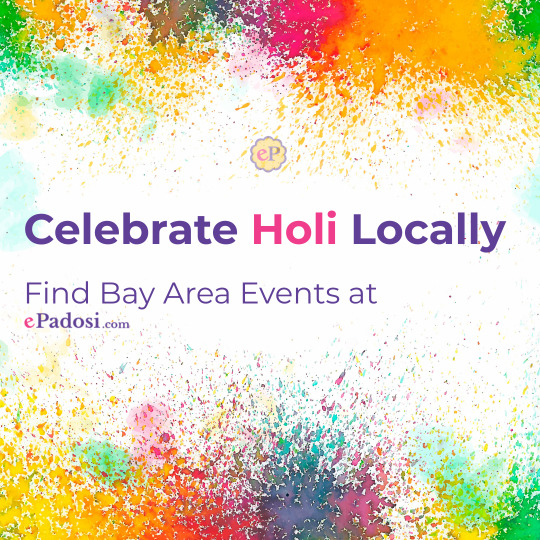
Discover the vibrant Holi celebrations coming up in the Bay Area! 🎉 Explore the colorful festivities at ePadosi.com and plan your joyful moments. Visit https://goto.epadosi.com/holi-events for more details!
#Holi#BayArea#Celebrations#ColorfulEvents#ePadosi#CommunityGatherings#Holi Events in the Bay Area: Celebrate it Now | ePadosi#https://goto.epadosi.com
0 notes
Text
to note: irish and scots gaelic traditions were closely linked as the two cultures were not all that difference in the 6th century. most of ireland and the western coast of scotland spoke the same form of gaelic and worshipped the same gods and witnessed the same celebrations. welsh traditions weren’t the same, and although they often shared a link (gods that ruled the same things or celebrations that covered the same time periods) they were often observed differently or had different names with slight variations, and cannot be considered the same religion. it’s also important to note that some of the gods thought to be irish/scottish are in fact gaulish, the european celtic pantheon, closer to germanic. the picts also celebrated a tradition much like ulster & gaelic tradition, but barely any of this history was recorded and can only be assumed from what their neighbours worship--pictish tradition was all but wiped out by invasions from the vikings in the 8th and 9th century. these are just my notes on the traditions that mordred, the druids, and those within the surrounding areas (the gaels & ireland and northern most parts of hen ogledd) would have practised.

THE WHEEL OF THE YEAR (gaelic festivals and traditions)
IMBOLC, or Là Fhèill Brìghde in Scot’s gaelic (the beginning of spring) is observed in gaelic tradition and is a festival thrown about halfway between the winter solstice and the spring equinox. it was celebrated by the ancient irish & scots. it was christianized as a festival of saint brigid later. it would be celebrated by feasting and was associated with the spring sowing and the blooming of blackthorn. it also involved lighting heartfires, divination, and watching for omens. candles and bonfires would also be lit. fire and purification were an important part of the festival. one might also visit a holy well, where one would make offerings to the gods in the form of a coin or item of clothing, by throwing it into the well. offerings would be made to the earth or the sea. ALBAN EILER, meaning rock and light as light of the earth, (the spring equinox ) is observed in scots tradition around march. it’s equivalent in christianization is easter. one would take the eggs of birds just laid, colour them, and then eat them in celebration of the emergence of the son from the womb and the goddess. the mother goddess boand and the father dagda would be celebrated here, or lugh--a warrior god and son of boand. gaelic gods now considered simply as “irish” gods. it was also considered a strong time for magic. BEALLTAINN, the festival of fire (the beginning of summer). it is the biggest and most important festival of the year as it was the start of the harvesting season and the end of the dark half of the year and the coming of the light. fires would be lit, especially by the druids as massive bonfires (which was later assumed by the romans to be some kind of ritual sacrifice.) once again this time of the year was thought to flow with magic and supernatural forces such as the fae could pass in and out of the mortal world. as was the case with most changes of the season. small amounts of animal blood would also be sacrifices to the gods and milk poured over thresholds to placate the fairies. hawthorn and rowan sprigs would be placed around structure and on horns of cows to ensure they kept producing milk and calves. the colour yellow was also important. it was also a time where one would avoid strangers and refuse requests or offers to share, the opposite being the norm in the society, to protect personal fortune and belongings. it is thought that the god belanos, the sun god, was worshipped at this time. the romans associated this god with apollo. ALBAN HEFIN, the light of the shore, midsummer’s day (the summer solstice) here it was celebrated the longest day and the shortest night of the year and thus, another fire/light festival. bonfires were lit on the sides of the roads to provide light to revelers and to ward off evil. people would jump through the fires for good luck. streets were lined in lanterns. this night was second only to halloween for its importance to the fae and folk may risk attempting to see them. this was also the time of year where some would travel to the henges, stones placed by druids the attune with the sun upon its rise as it allowed them to connect with the movement of the sun across the sky. the standing stones were and still are important sacred ritual places for celebrating the sun.
LUGHNASADH, lúnastal in scot’s gaelic (the beginning of harvest) named after lugh as autumn was his month and this festival was hosted on the first of august. roughly the name translates into lugh’s assembly. lúnasa is the name for the month of august. the lughnasadh festival is begun by the god lugh as a funeral feast and athletic competition in commemoration of his foster-mother tailtiu. the games would incorporate such things as horse racing, music, story telling, trading, sporting contests, and ritual athletics. this is also to give lugh strength, as lugh must defeat the god crom dubh for his grain as treasure. ALBAN ELFED, the light of the water (the autumn equinox), this is a time of balance, where the day and the night are equal. the goddess is thanked for a bountiful harvest. this day was observed as the waning of the goddess, where she would rest before rising again in the spring. it was the beginning of the darkness. one would spend their day mourning the fallen goddess, placing dried plants upon her altar. one would thank the earth as mother and giver for the second harvest before autumn begins.
SAMHAIN, the beginning of winter (the festival of the dead) around the 31st of october the gaels would honour their dead. it was a festival of remembrance and honouring of the departed. the veil that separates worlds is thinnest at this time of the year, so the world of mortals, the realm of the fae, and the realm of the dead, blend as one. it is at its purest a night of wonder and magic. the crone, the cailleach, the diving creator, and also known as the queen of winter, comes to strip the leaves from its trees and quicken the decay of flesh so that new life may come. it is also a time to ask the crone to take the unwanted away from our years. time loses all meaning at samhain, the past and present and future are one. the dead walk amongst the living. winter is the season of ghosts. many would light bonfires to keep the evil at bay. a torch was often lit and carried around the boundaries of home to protect the property. the dead would be appeased with a supper, served in silence, with an empty place set at the ehad of the table for the ancestors. none would look directly at the seat for it would bring misfortune. the untouched plate and cup would be left in the woods later.
ALBAN ARTHAN, the light of winter (the winter solstice) it is believed amongst some orders of druids that this time of year king arthur pendragon is symbolically reborn as the “sun child” but it is more realistically the light of the great bear (a constellation also known now as the plough) as art is gaelic for bear. at this time of year the bear shines the brightest as the sun is at its lowest point and the days are at its shortest. this is the time that the wheel of the year revolves beyond death and returns towards new light and new life. traditionally a log would be burnt in the central fireplace which must come from one’s own land or be a gift and cannot be purchased. it is lighted with the remaining piece of the log from the year before and thus light is passed from one year unto another. it should burn slowly in the fire place for 12 days before being extinguished and the ashes stowed. one would also take a live tree into the home so that the fae of the woods would have a place to keep warm during the winter. bells were hung upon the branches so one might know if the fae were present. food and treats would be left on the branches for the fae to eat.
#notes 【 𝑳𝑶𝑹𝑬 】 ❝ there is no more desperate creature than a humanbeing on the verge of losing love .#i will write another post on the gods themselves later cuz this took f o r e v e r
19 notes
·
View notes